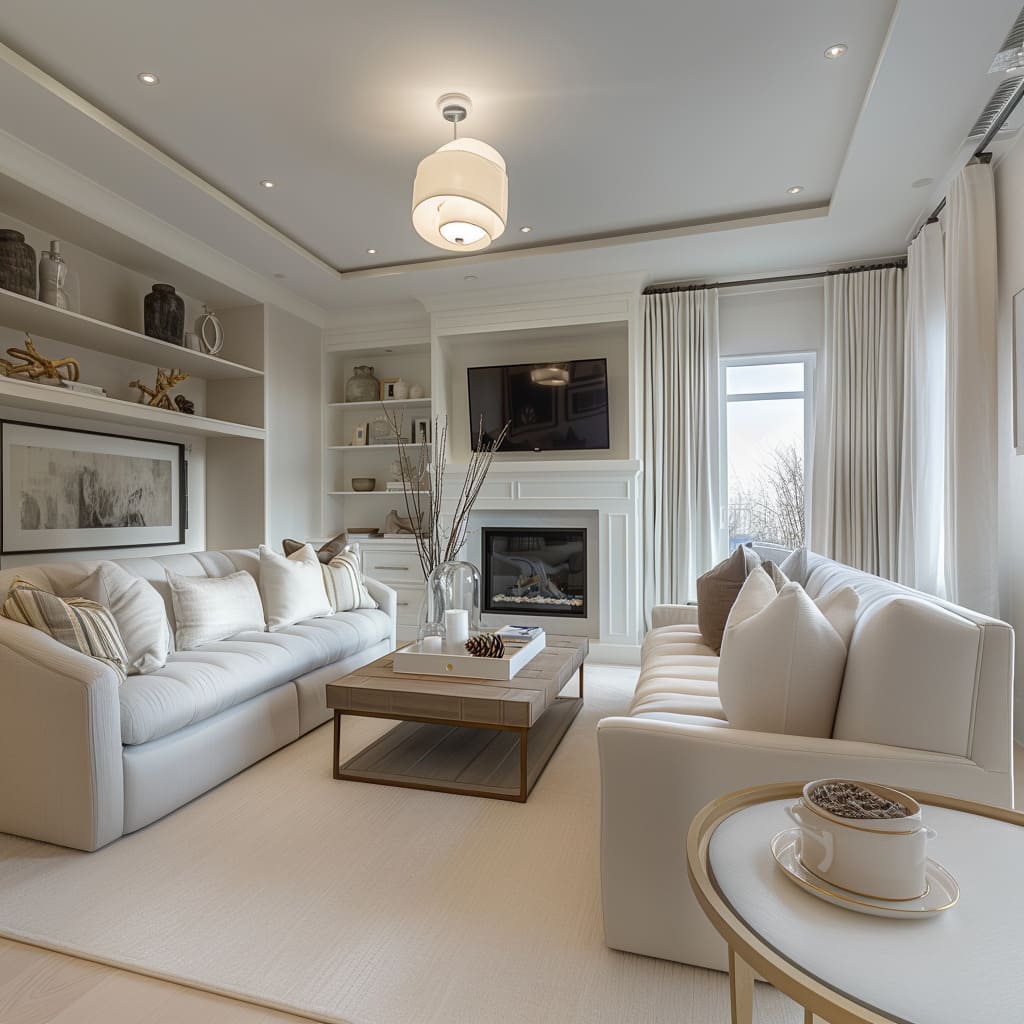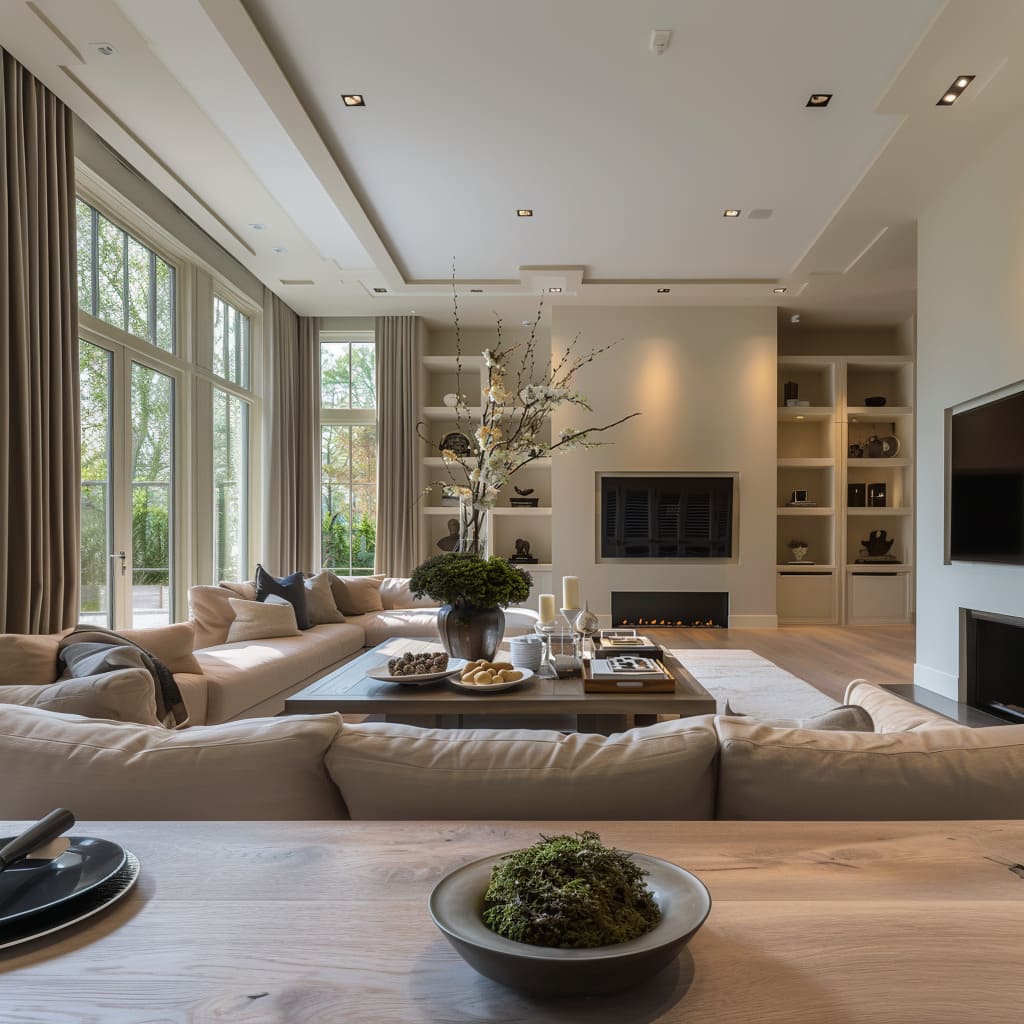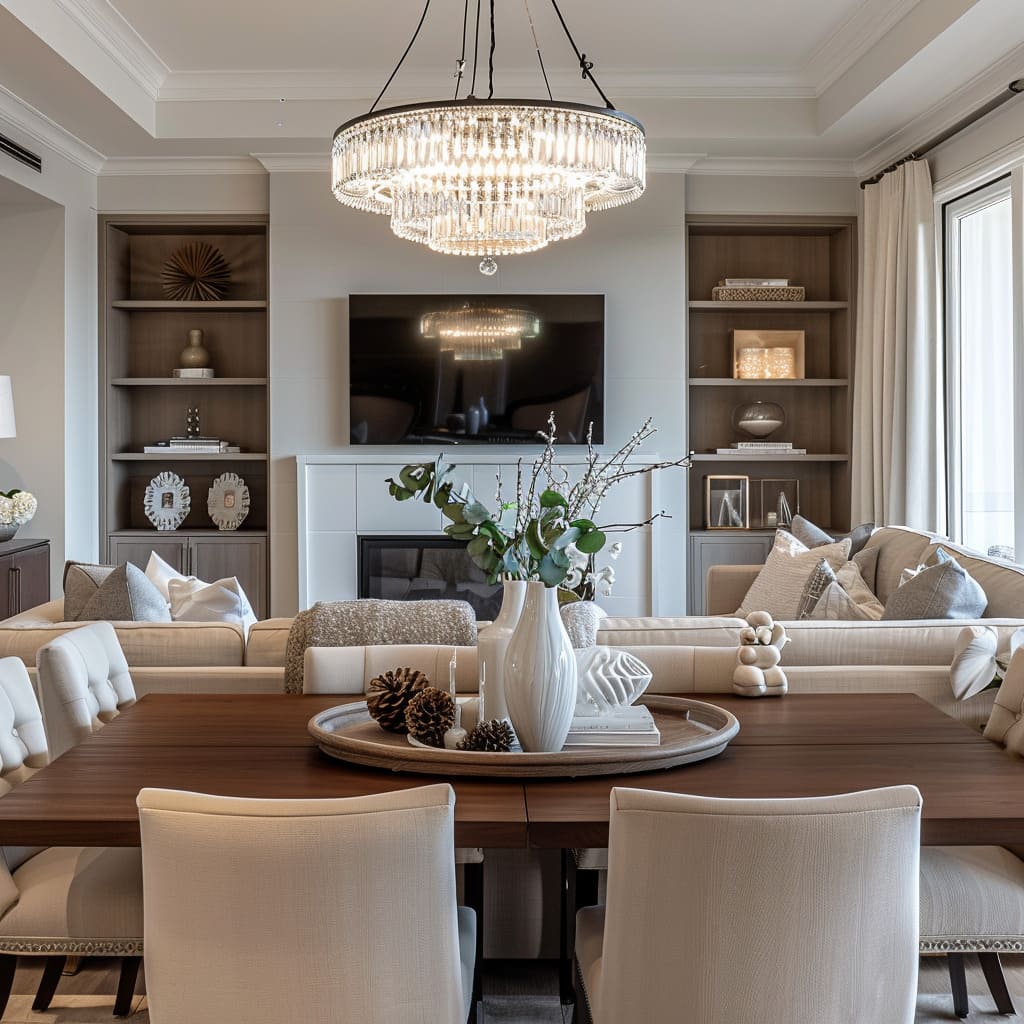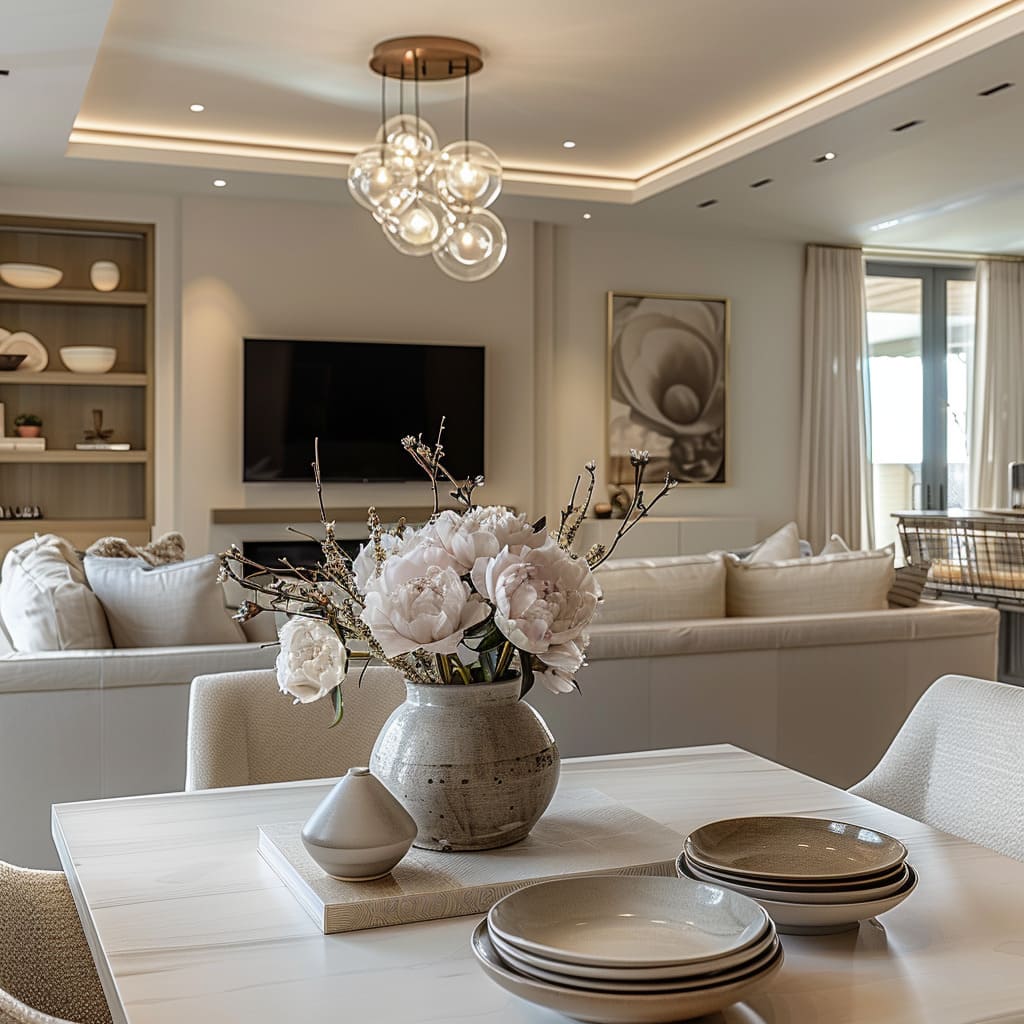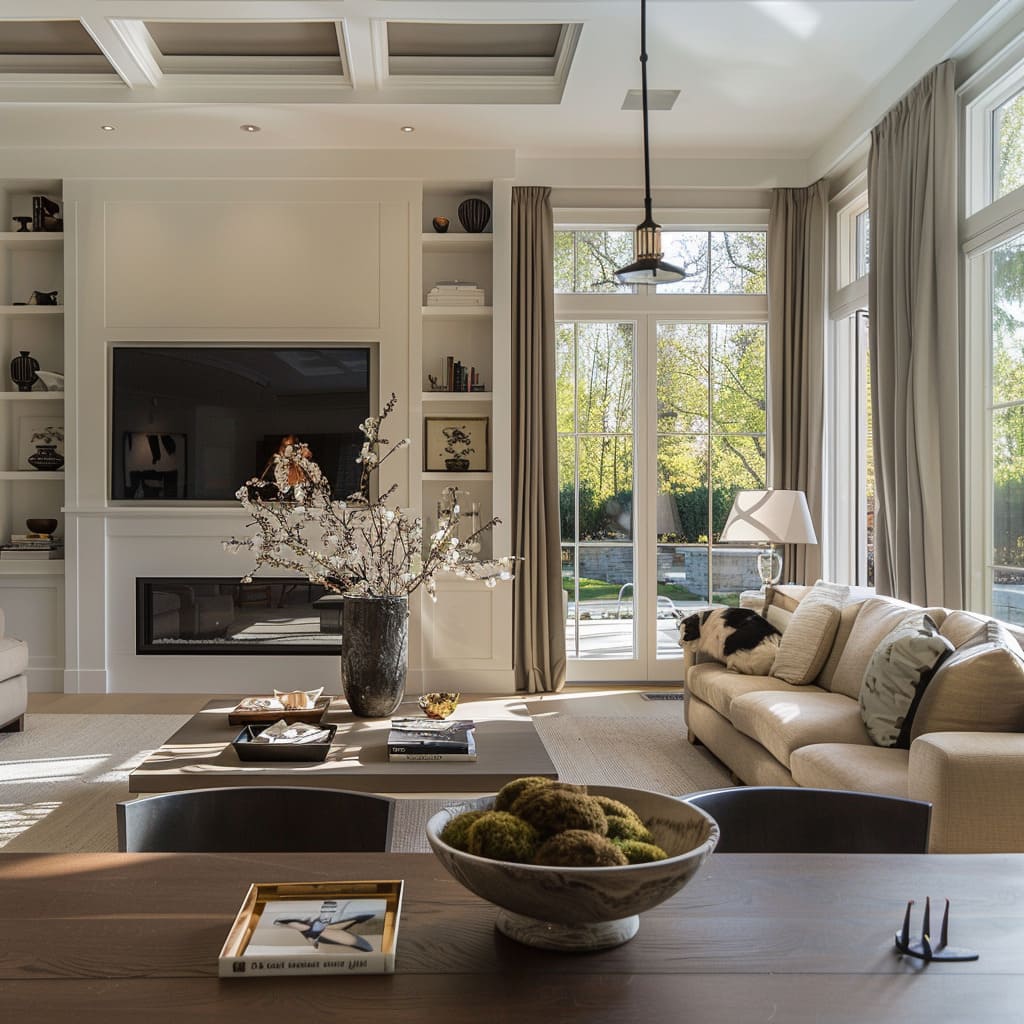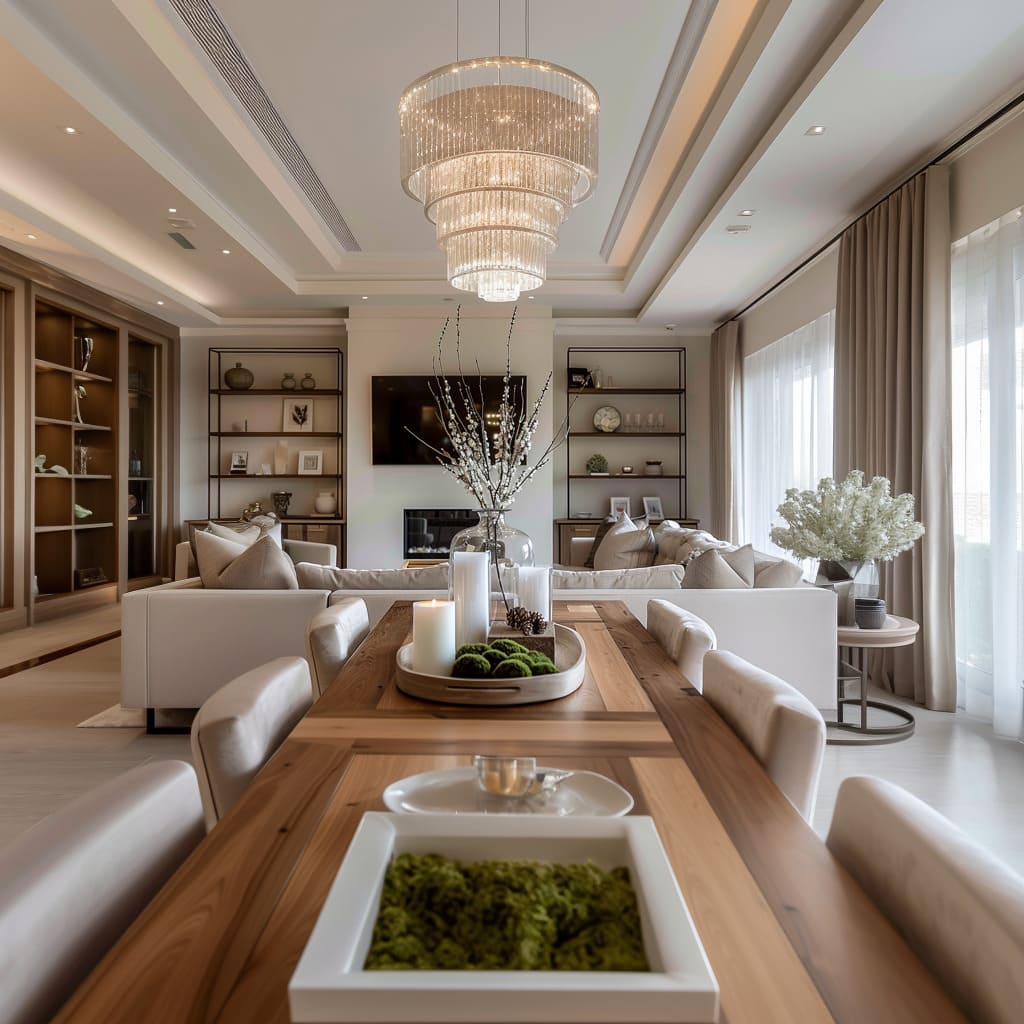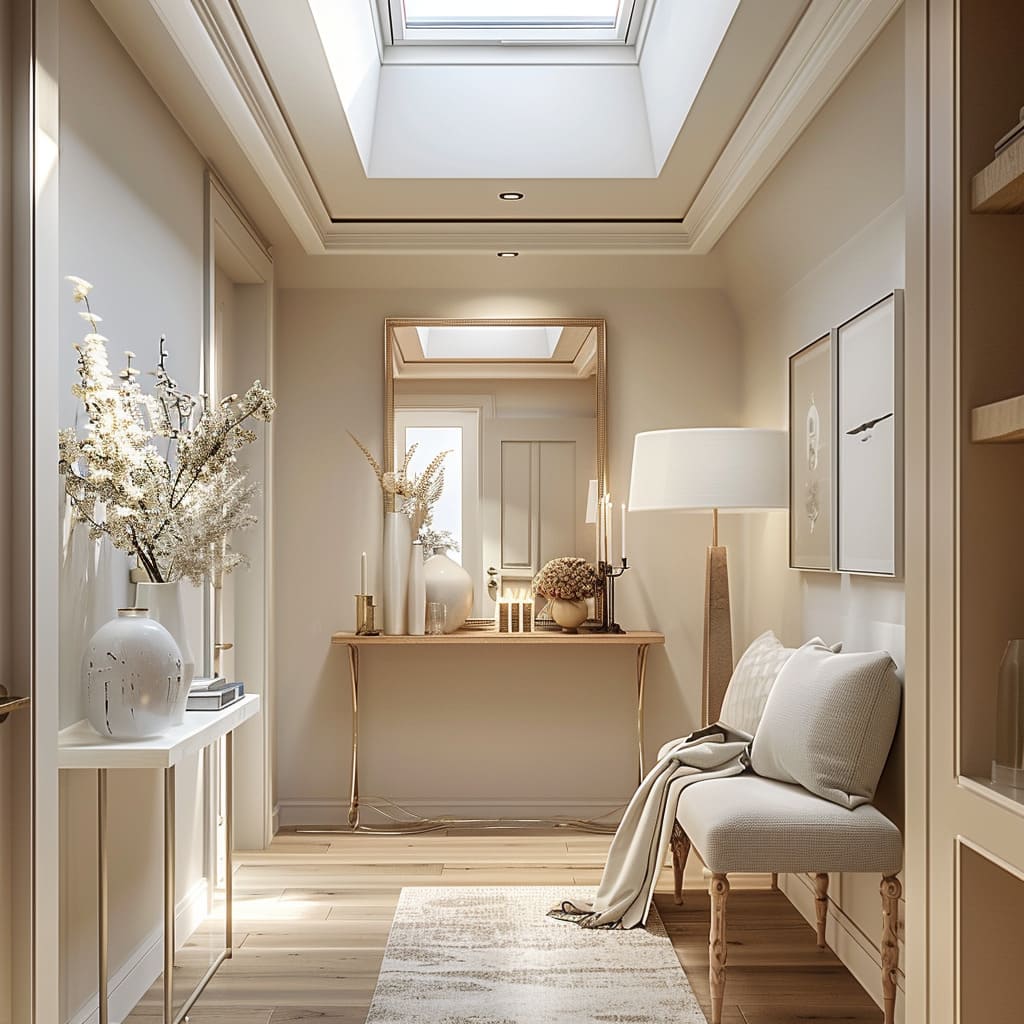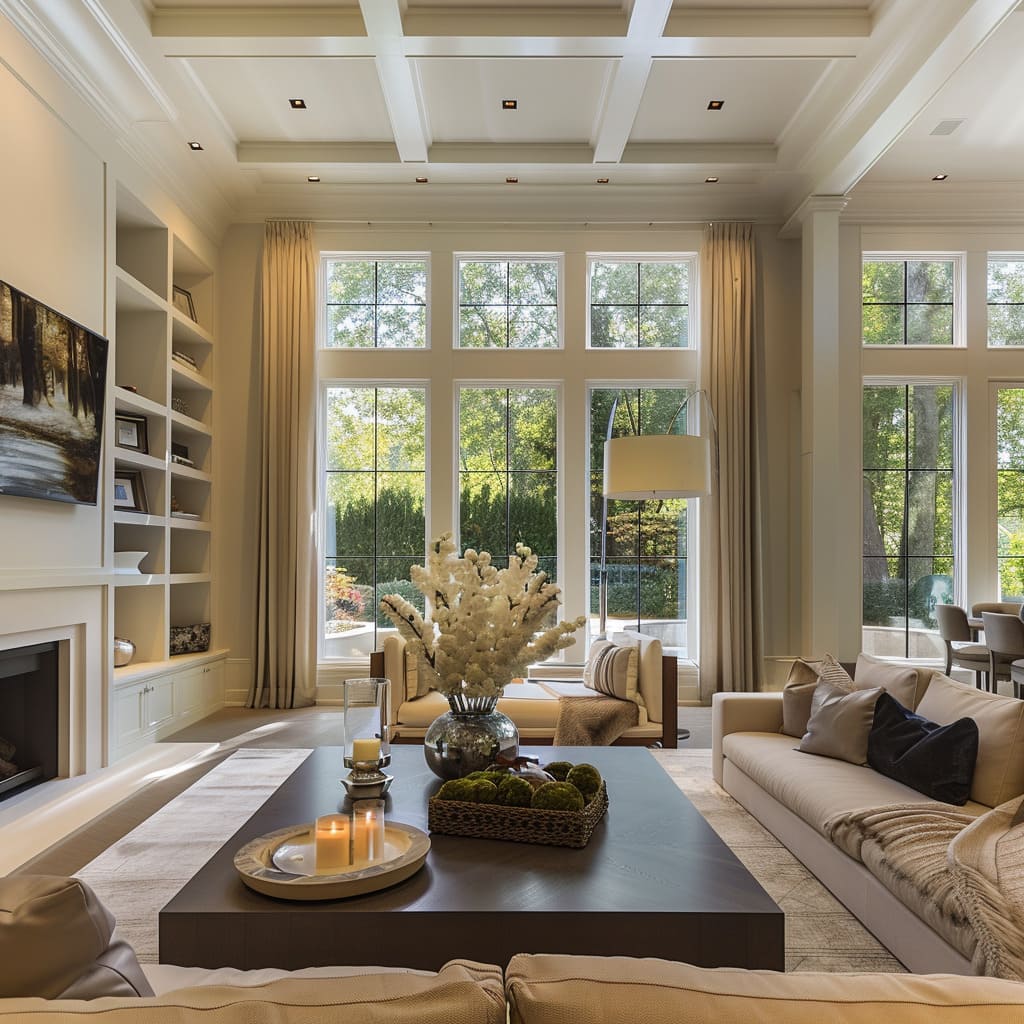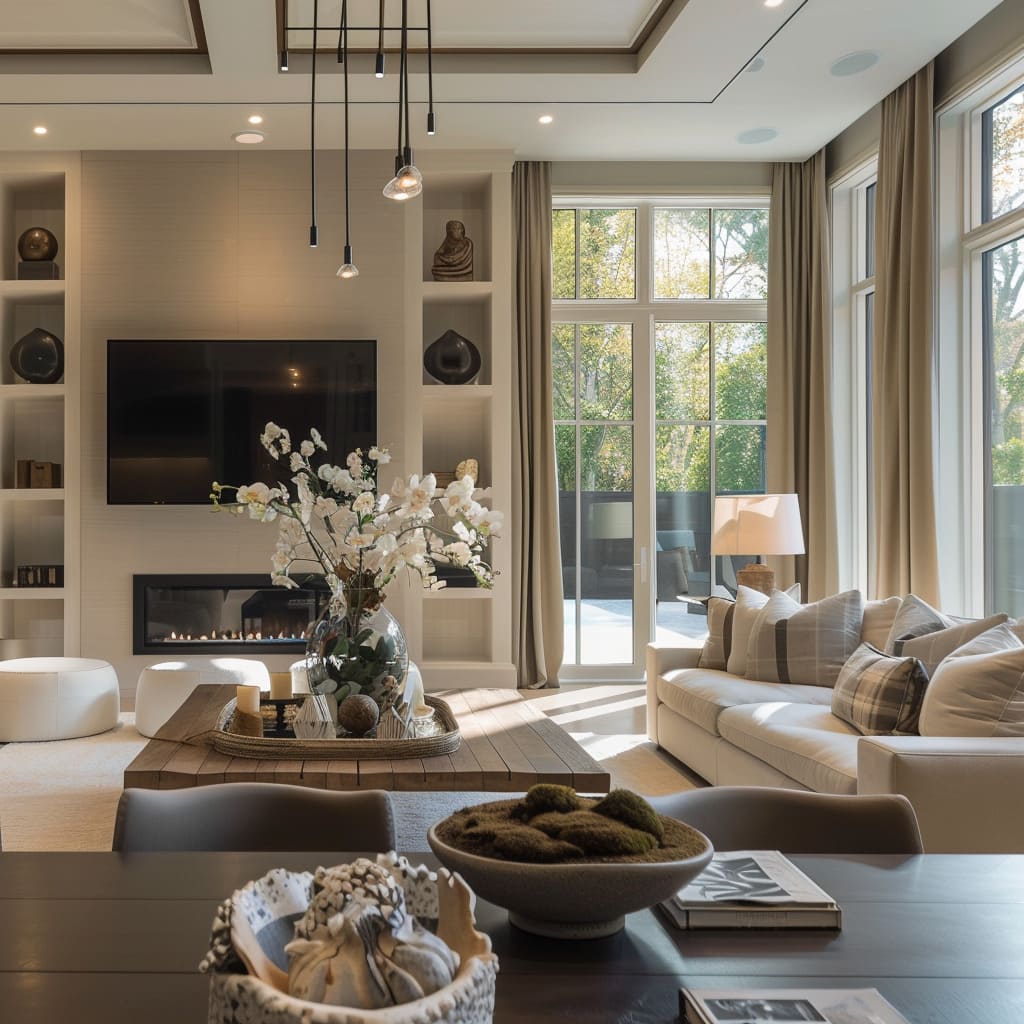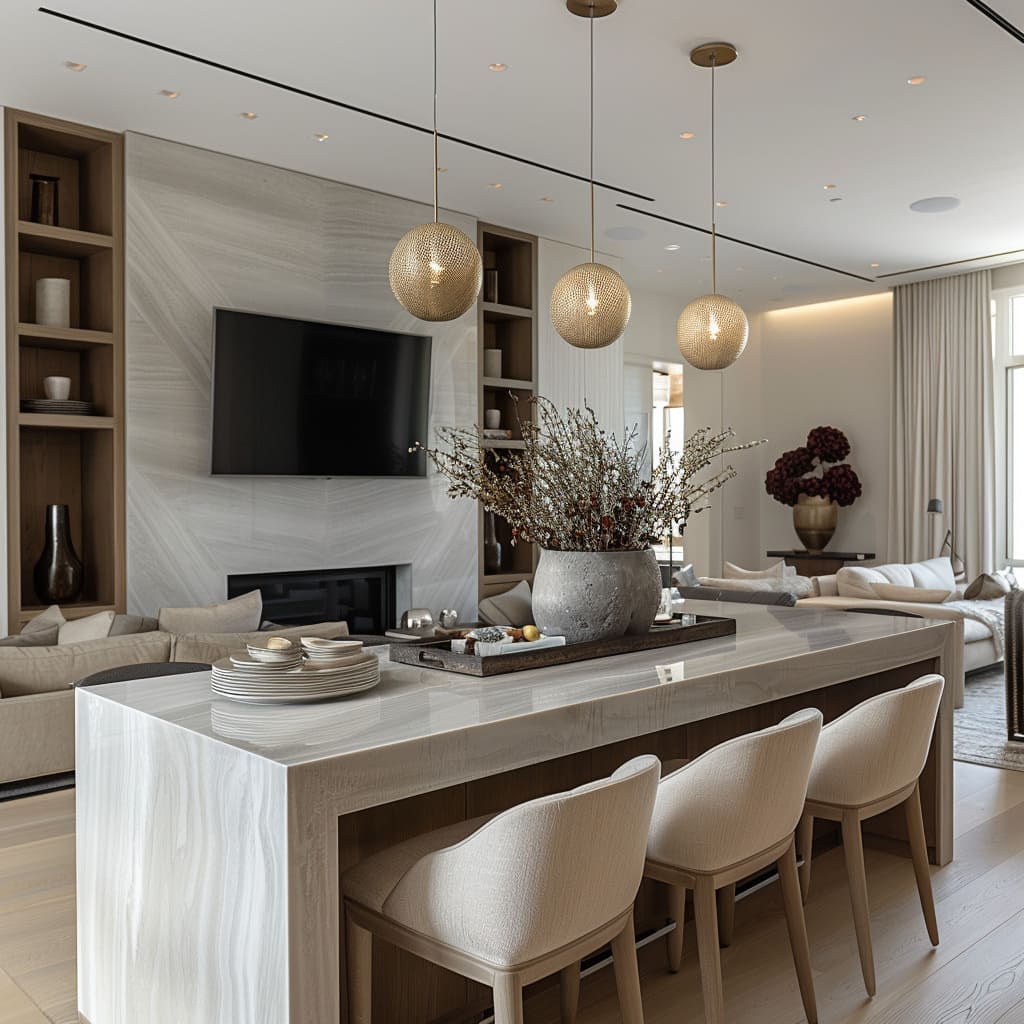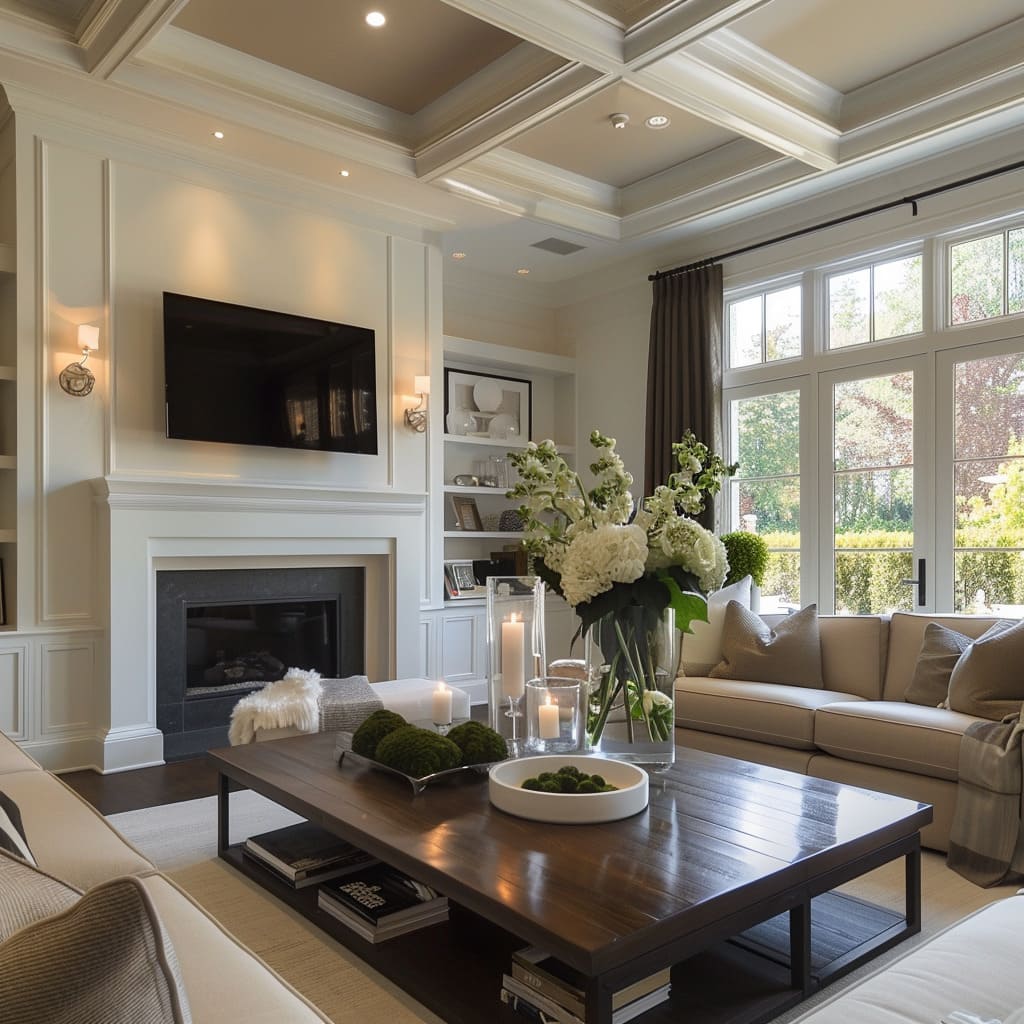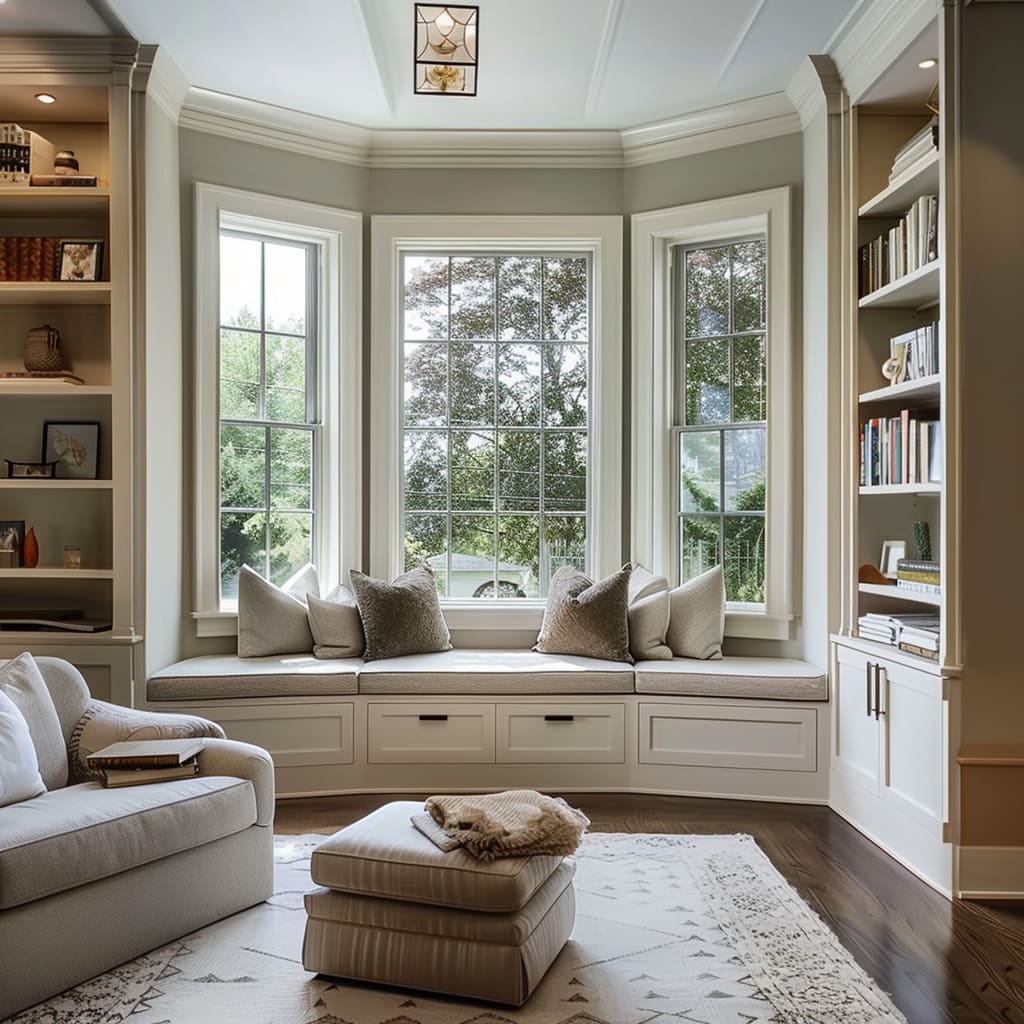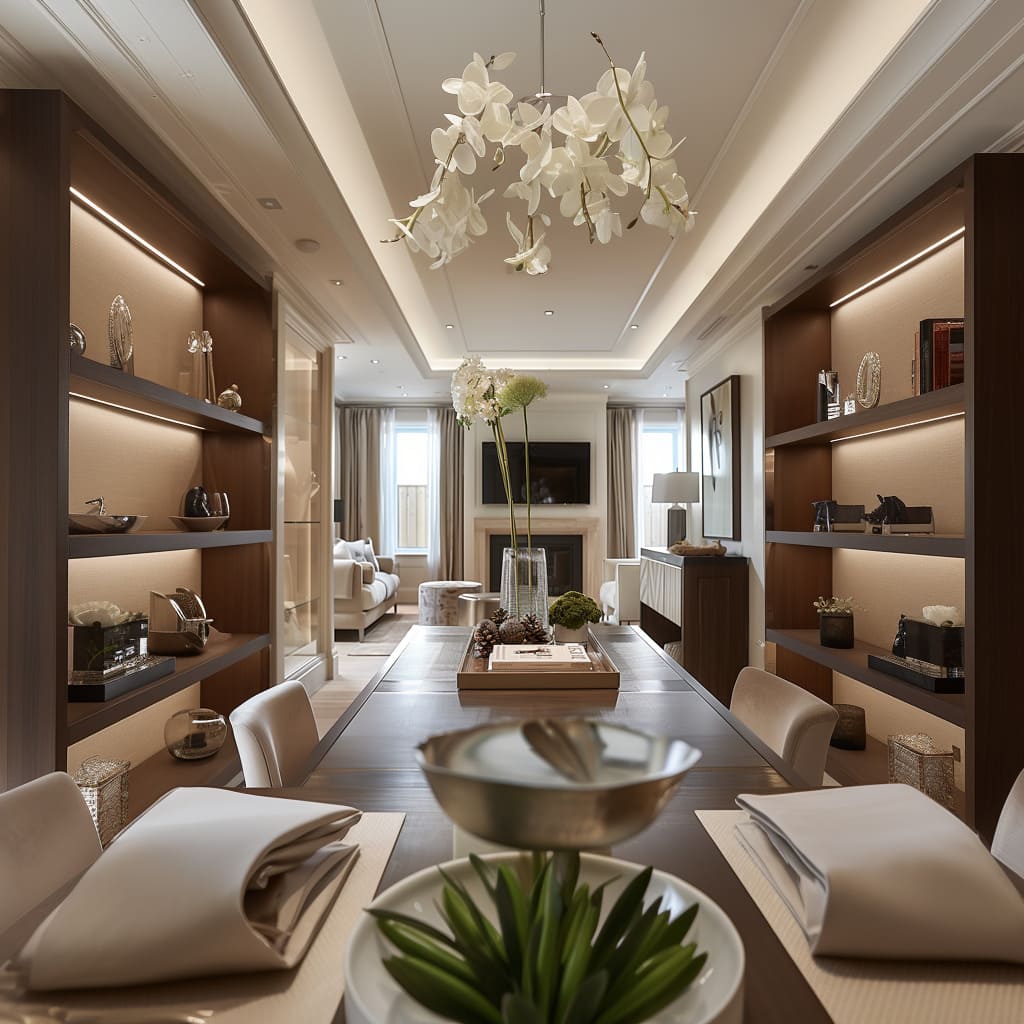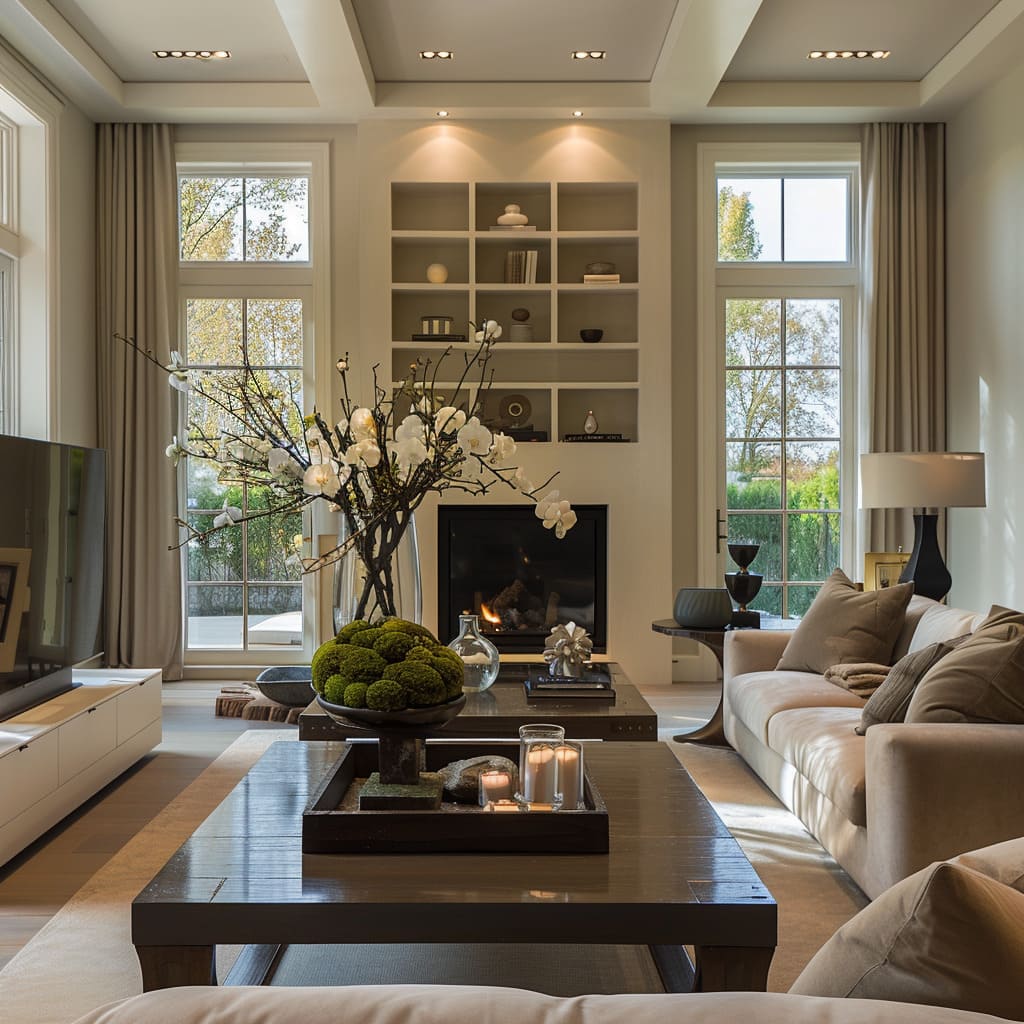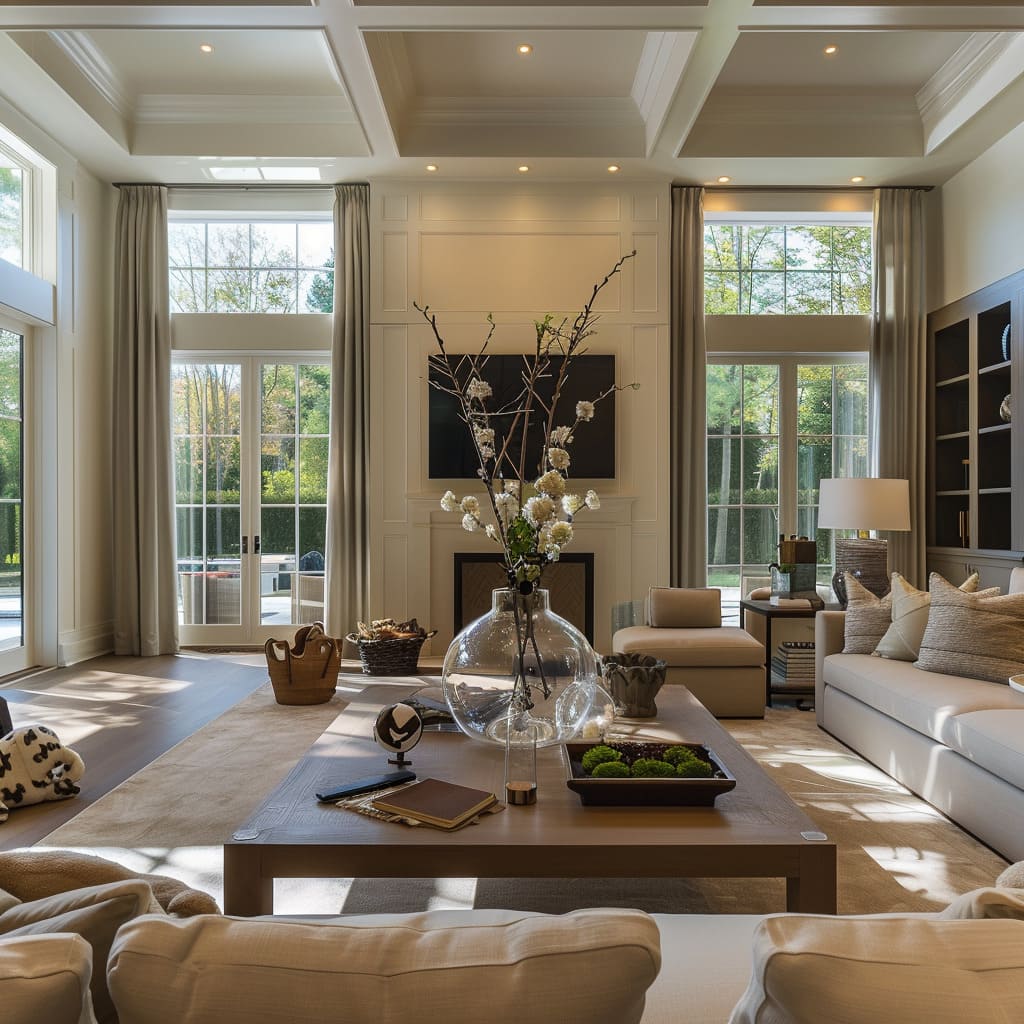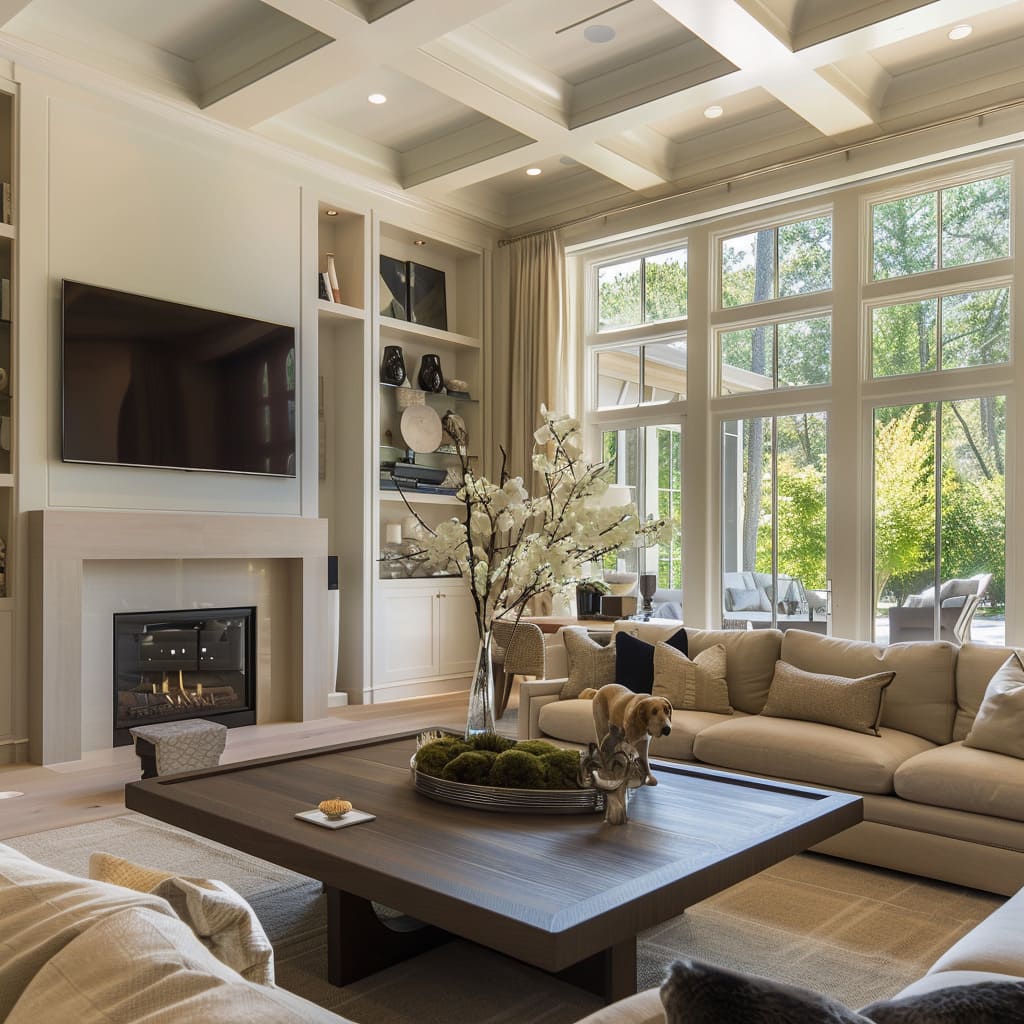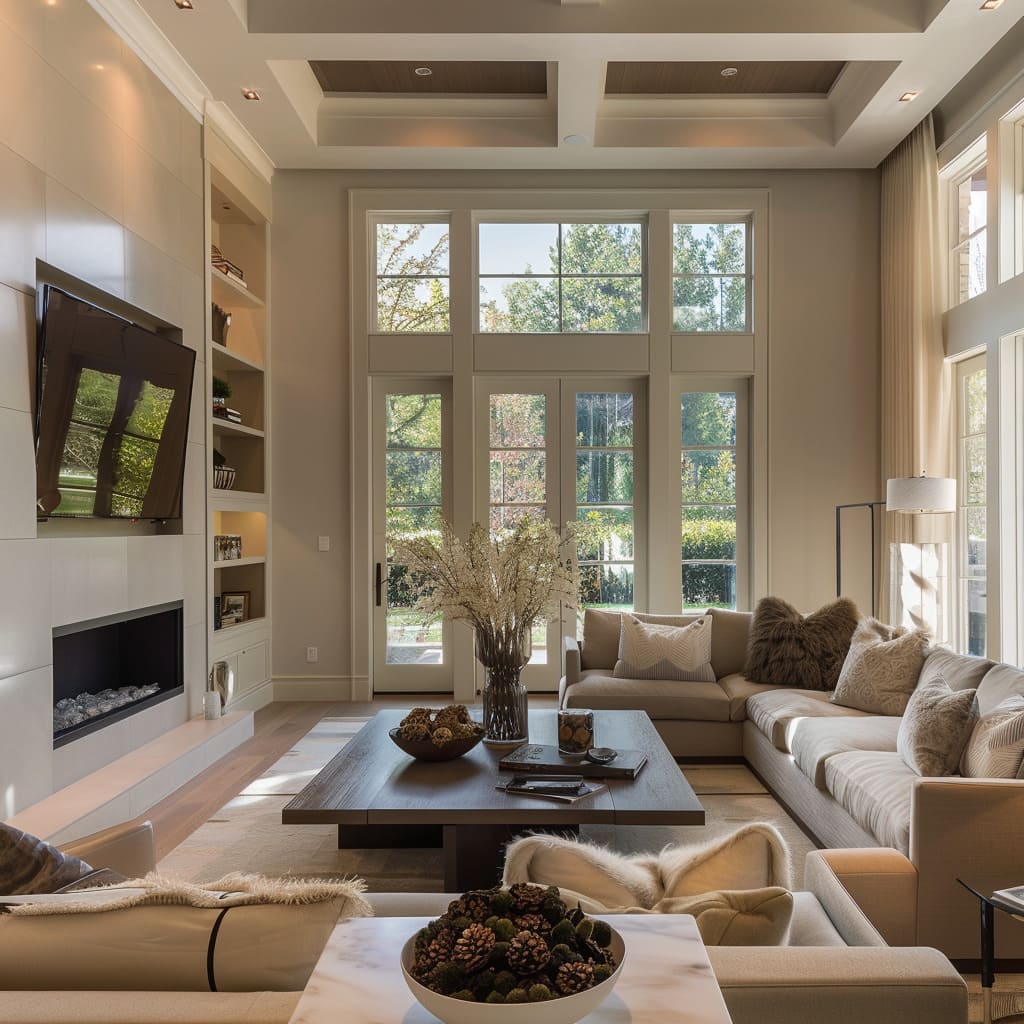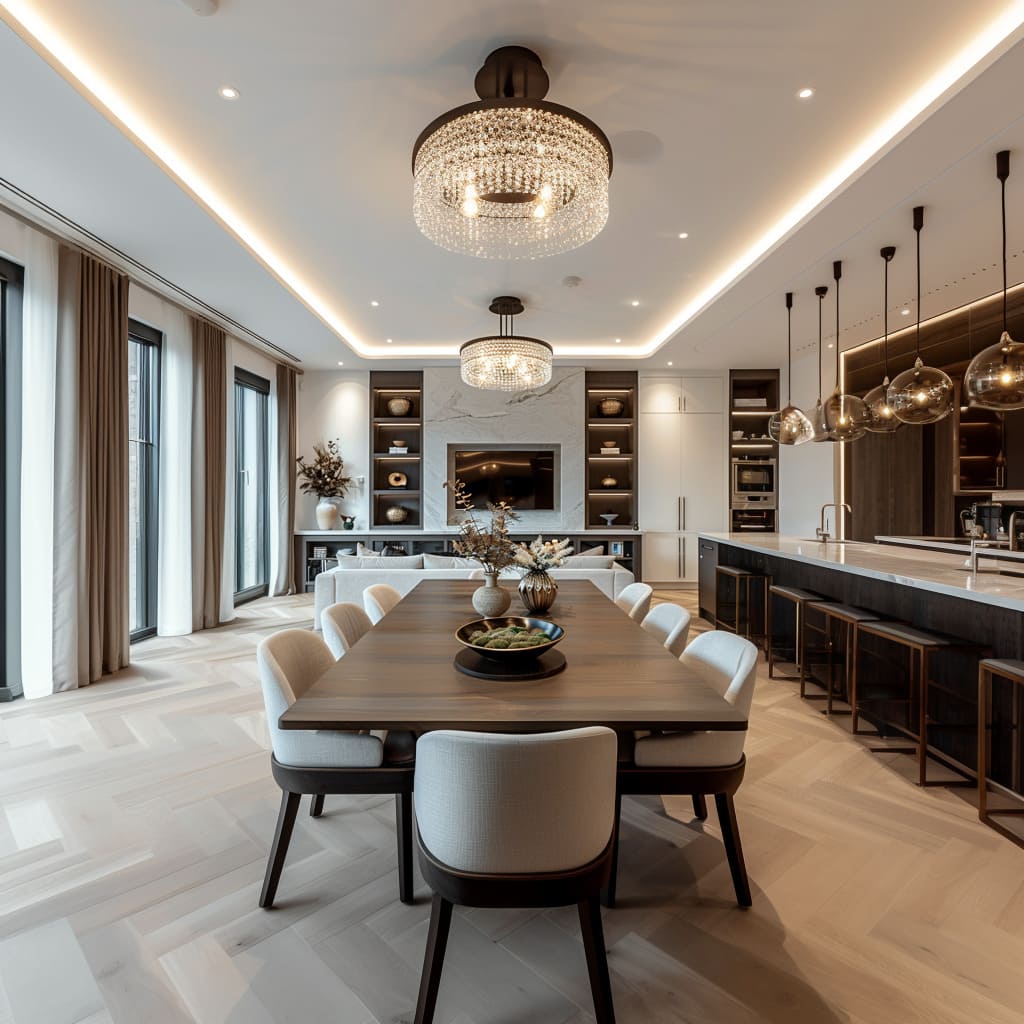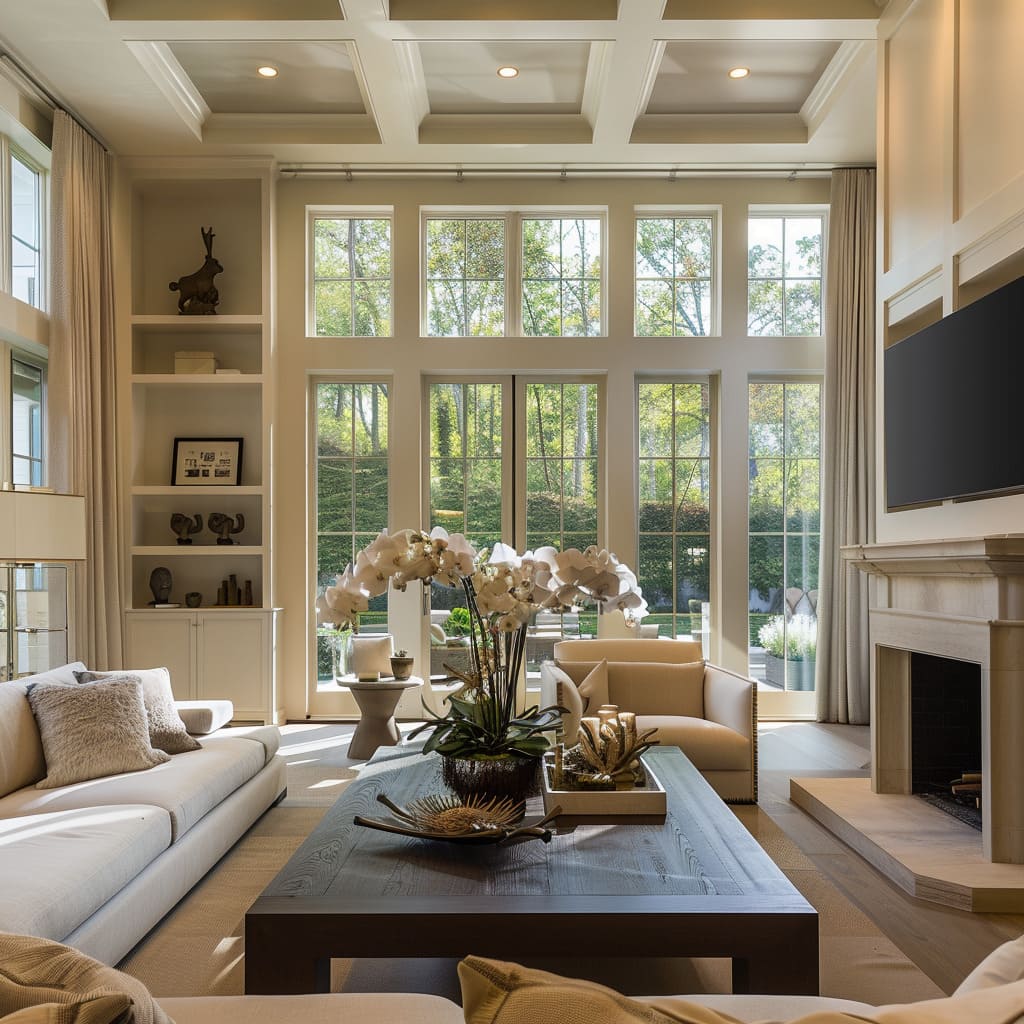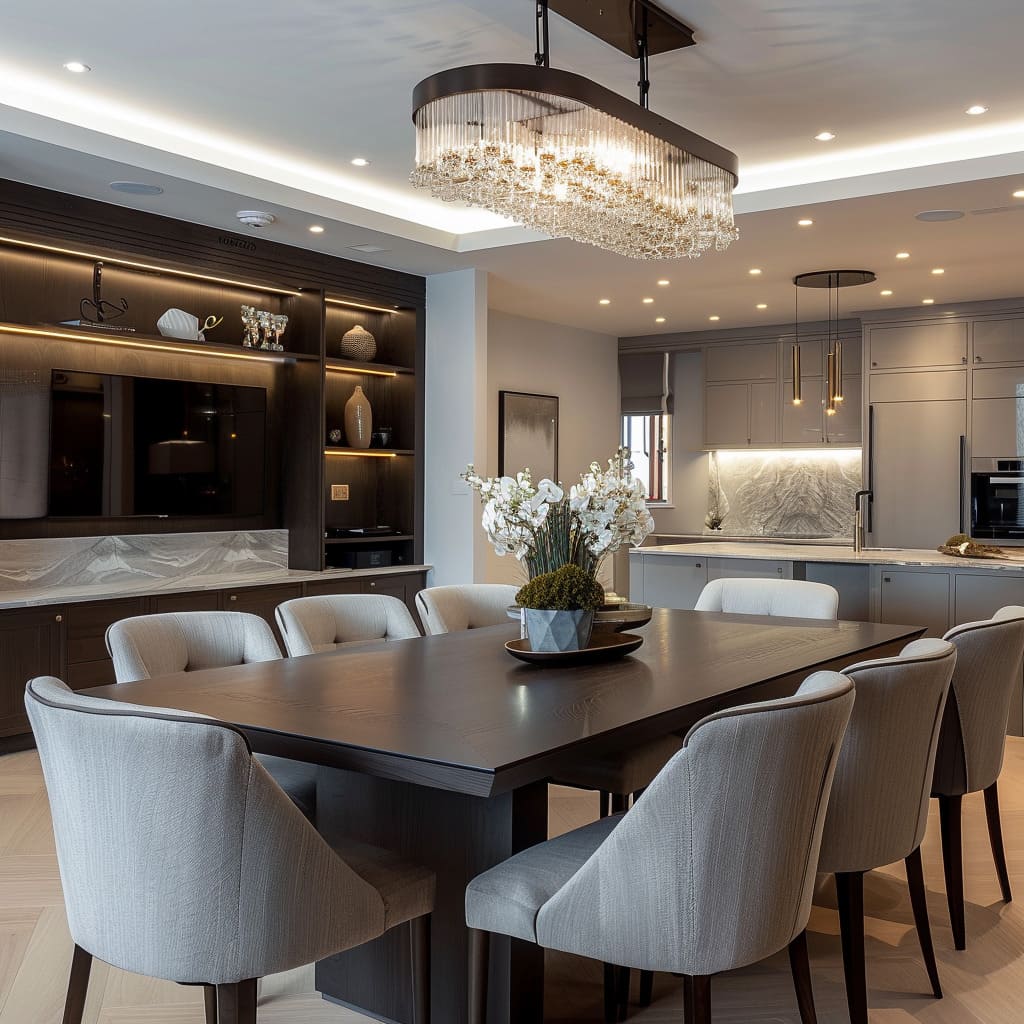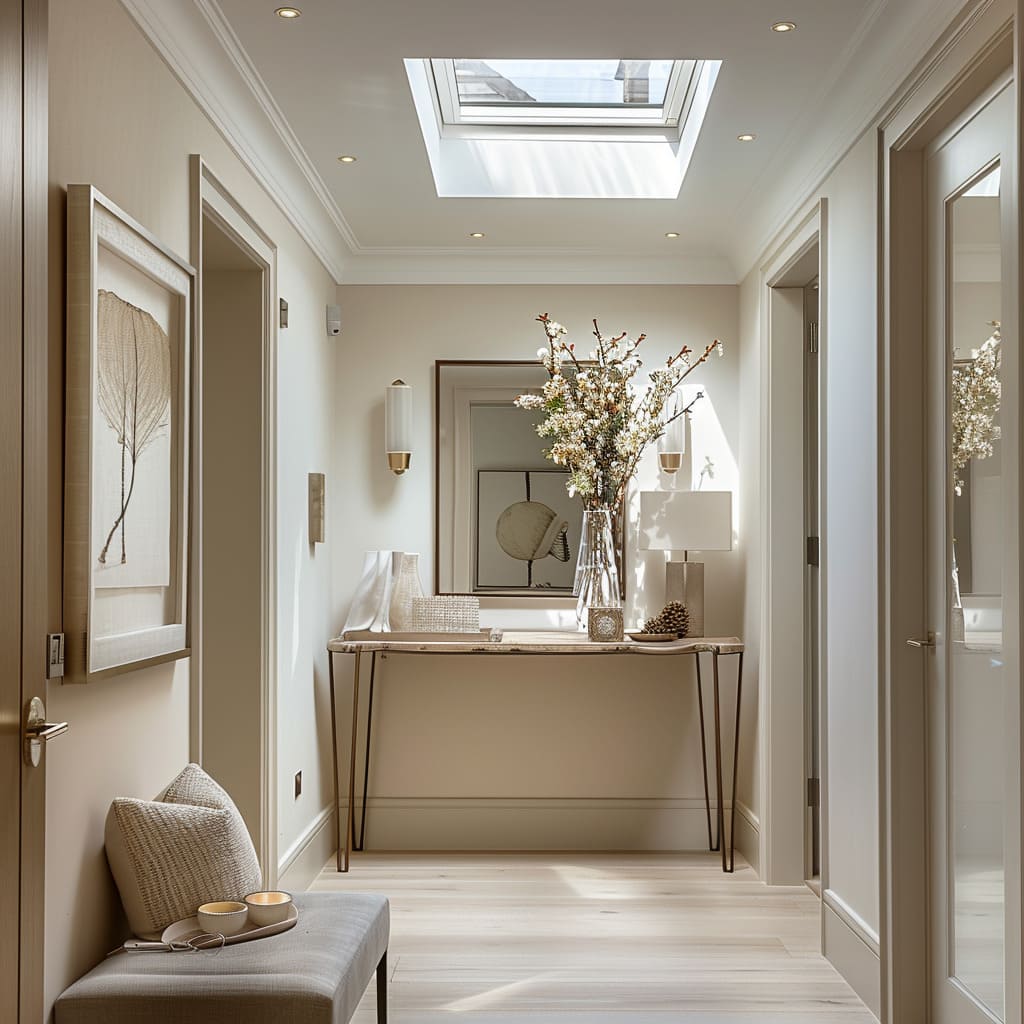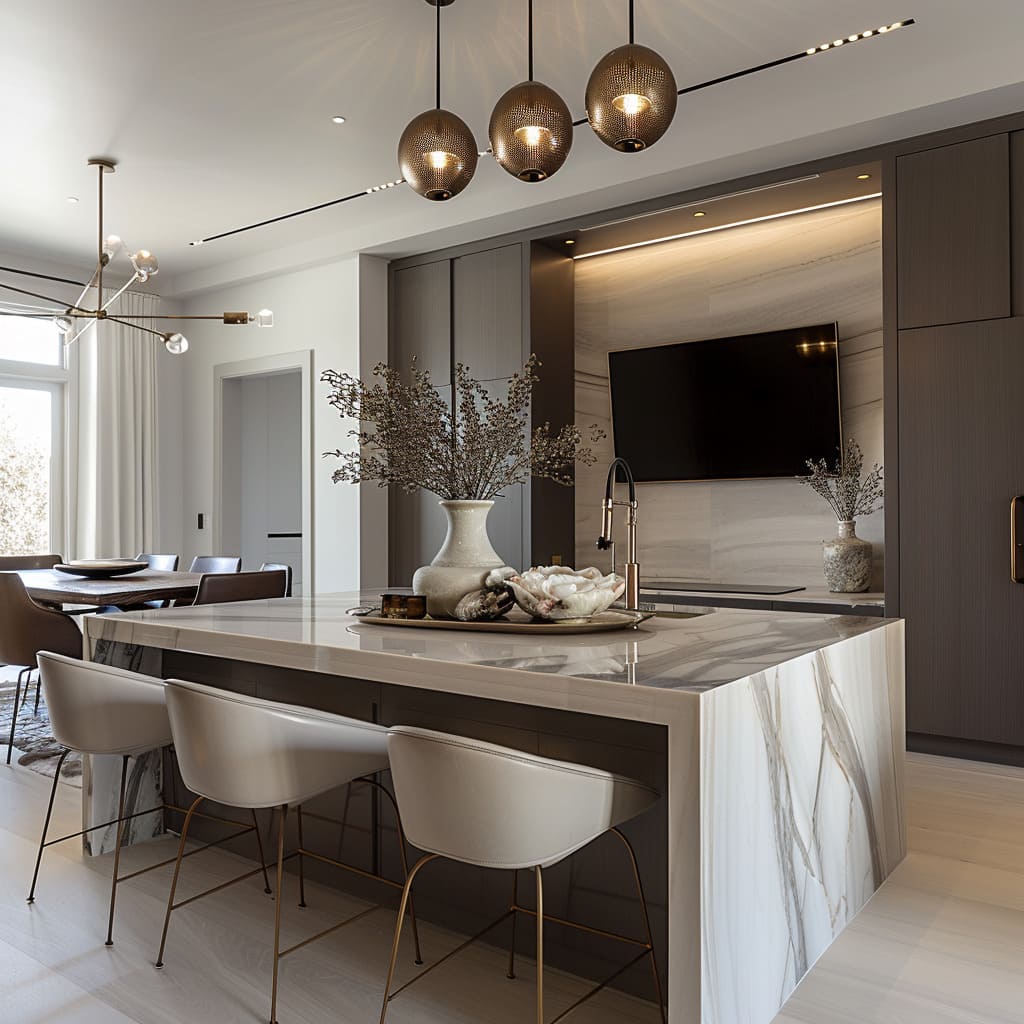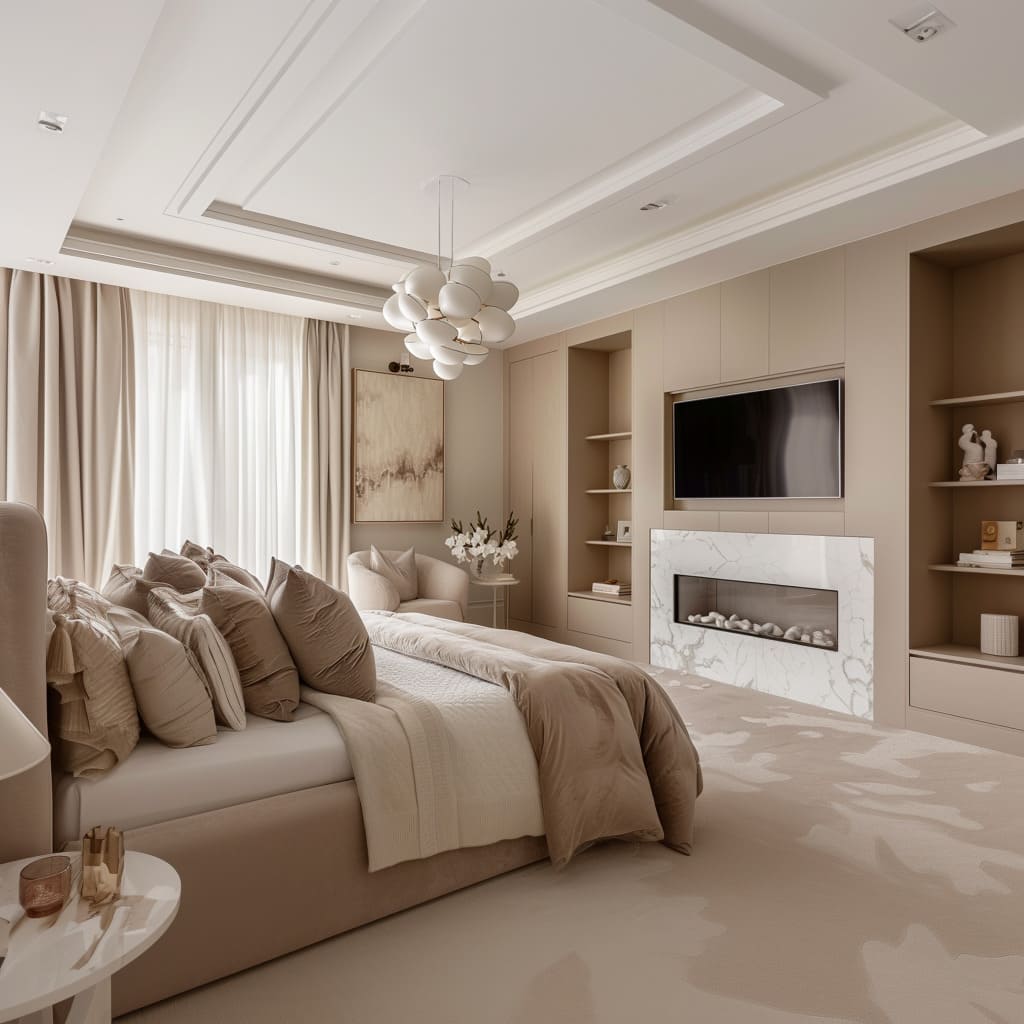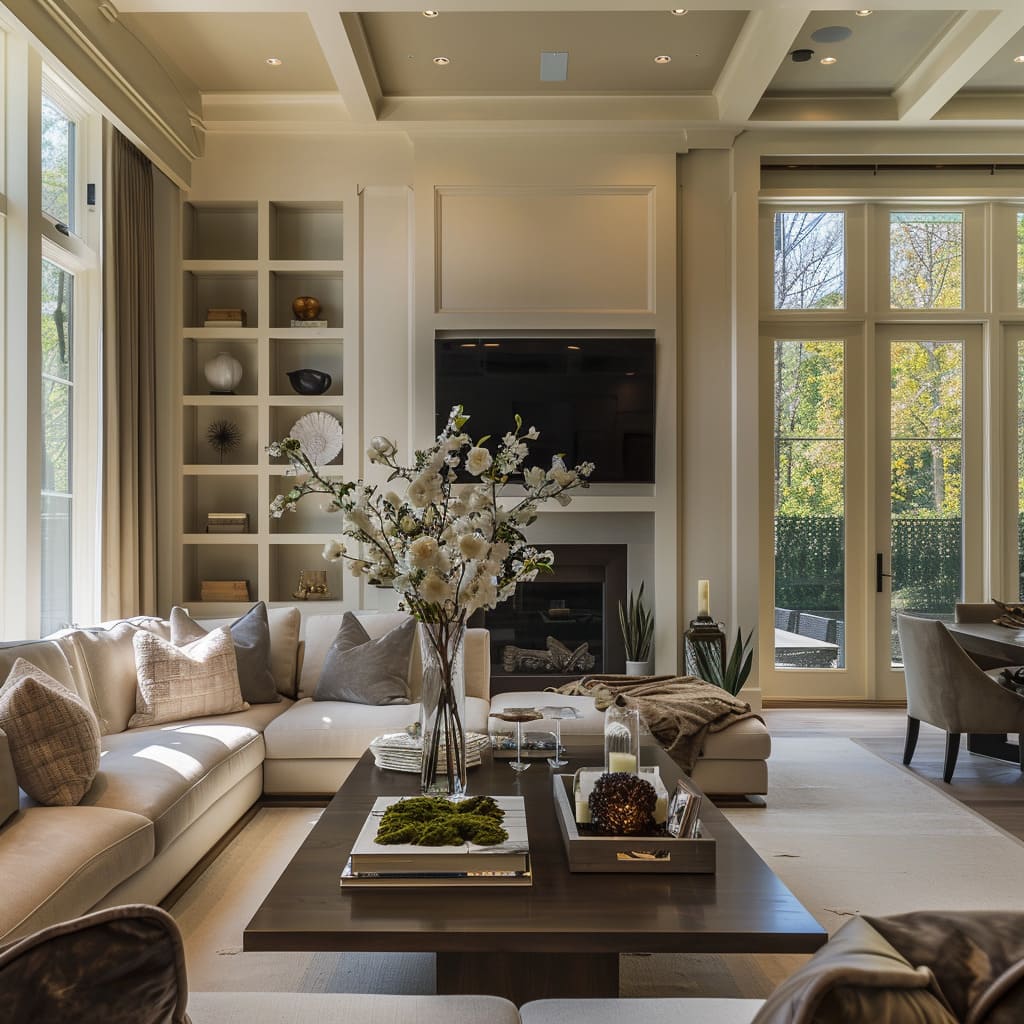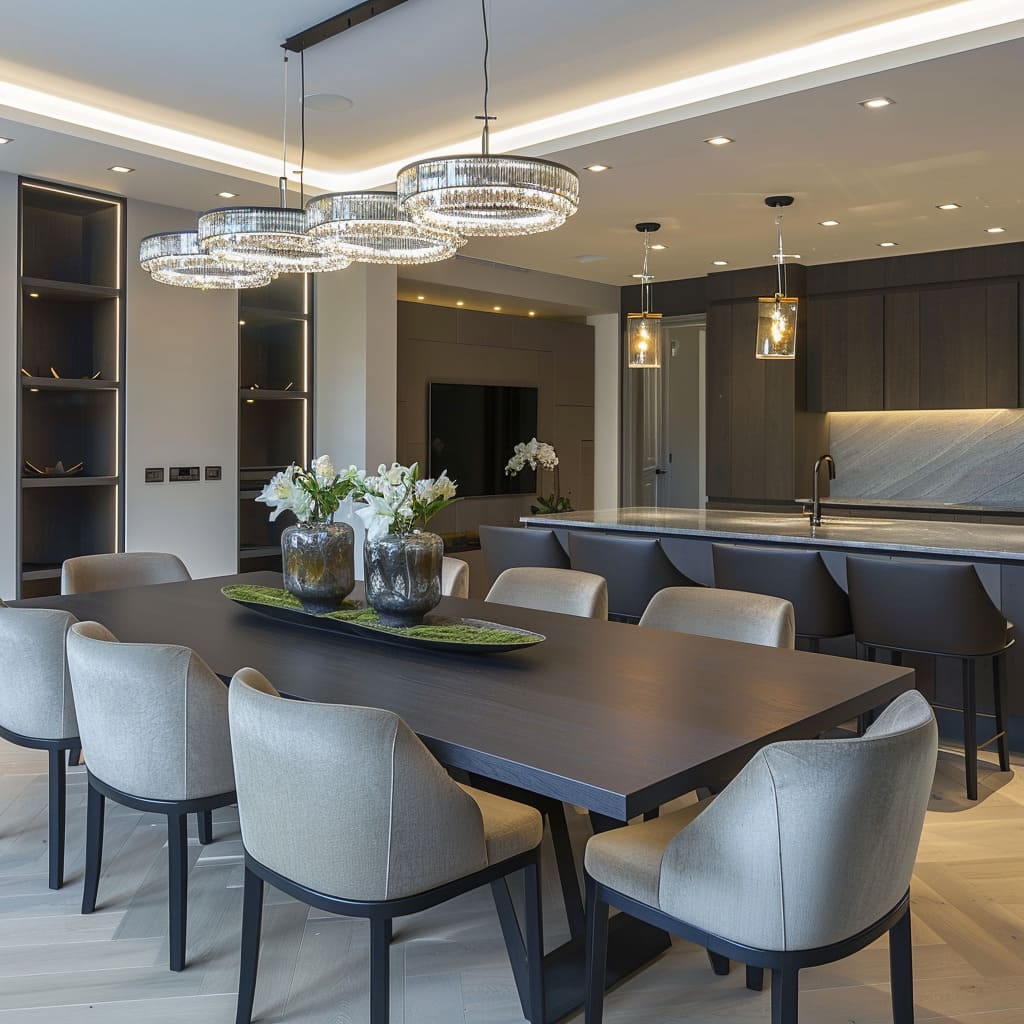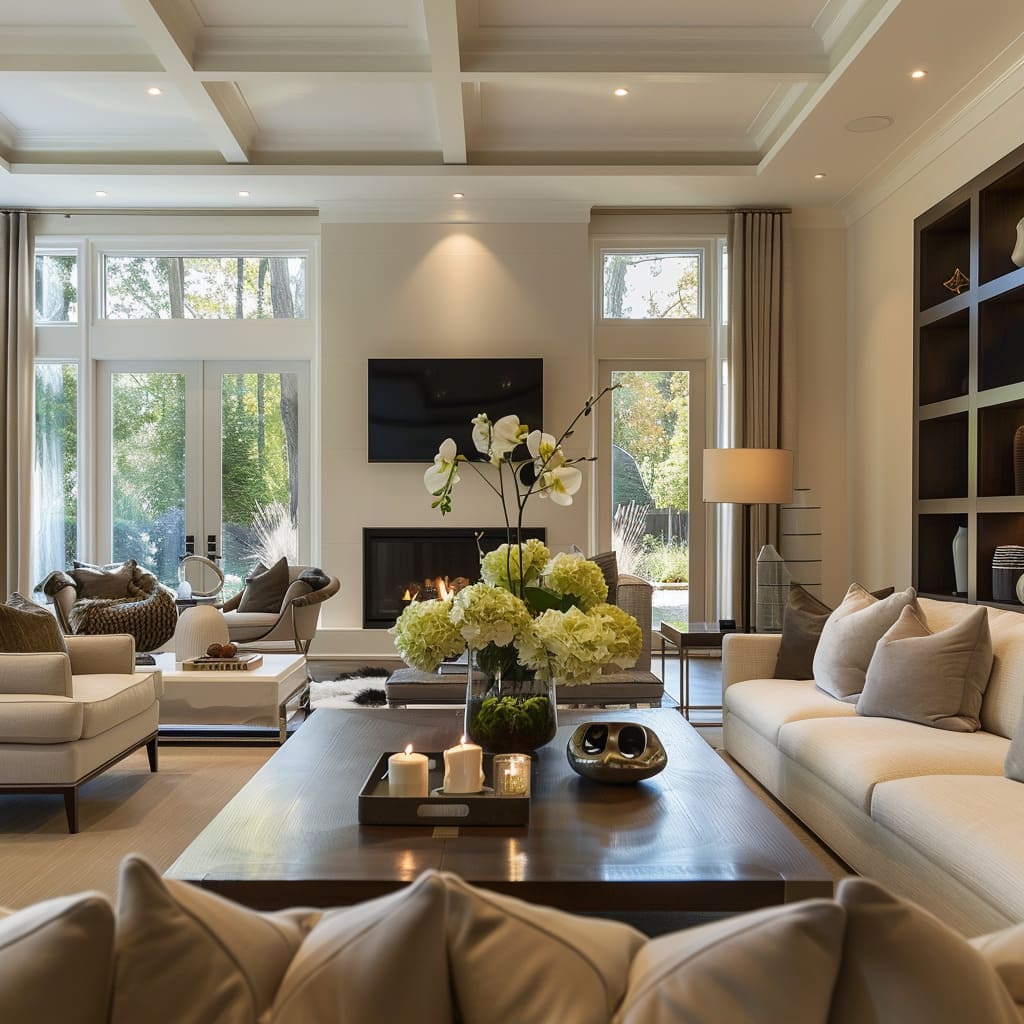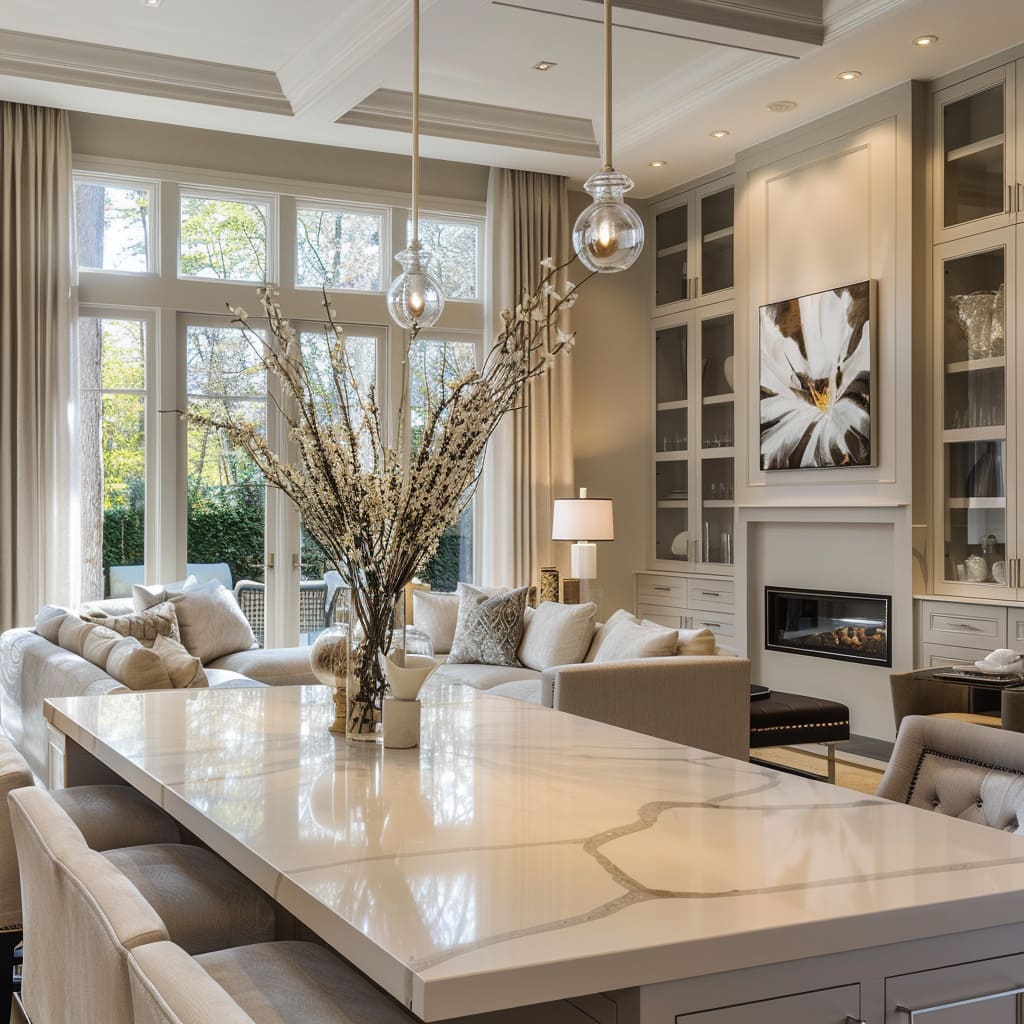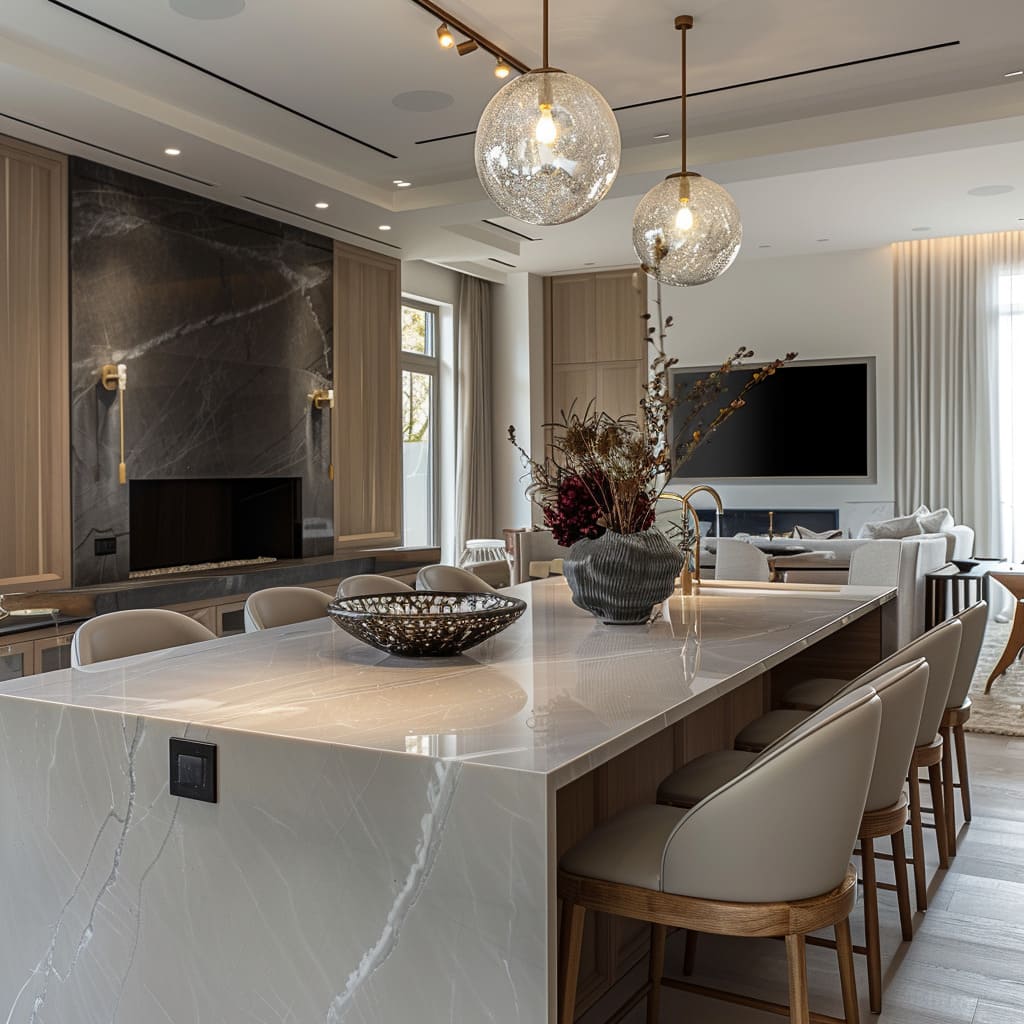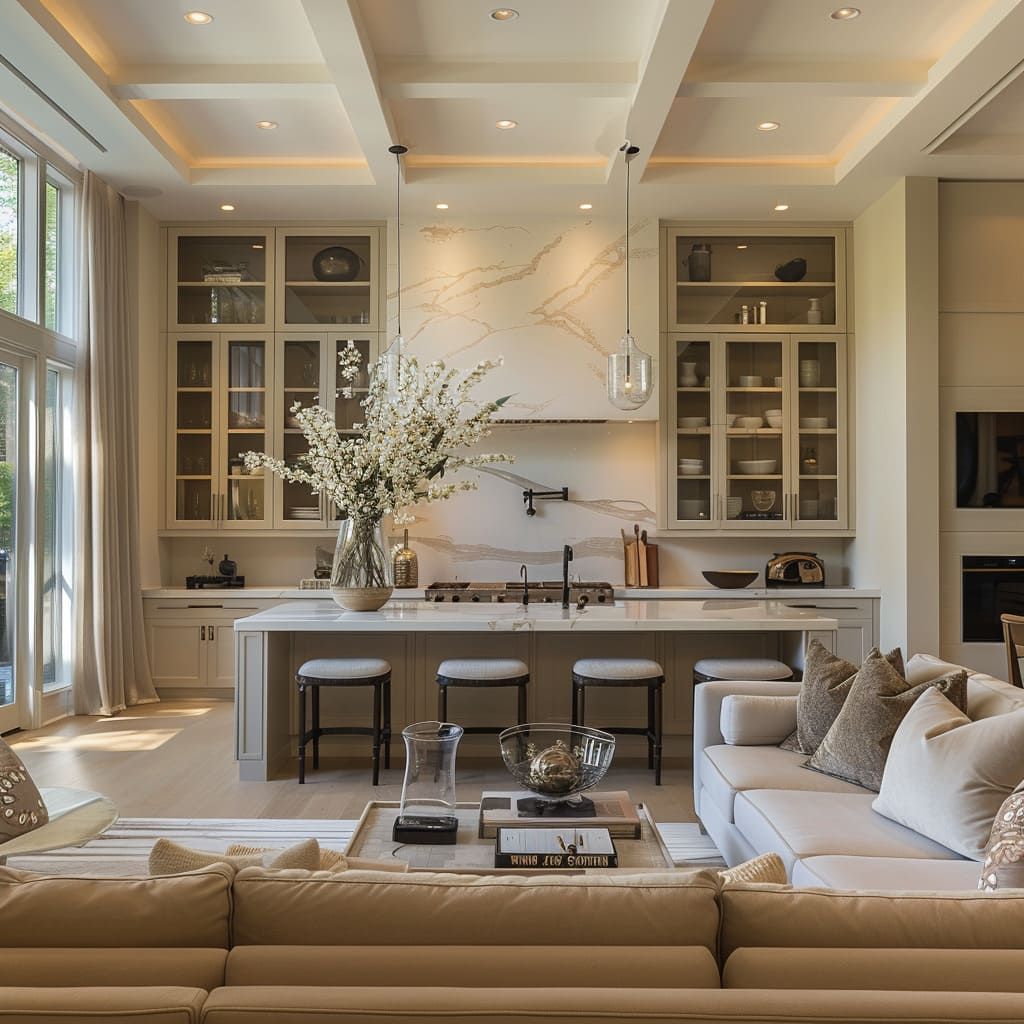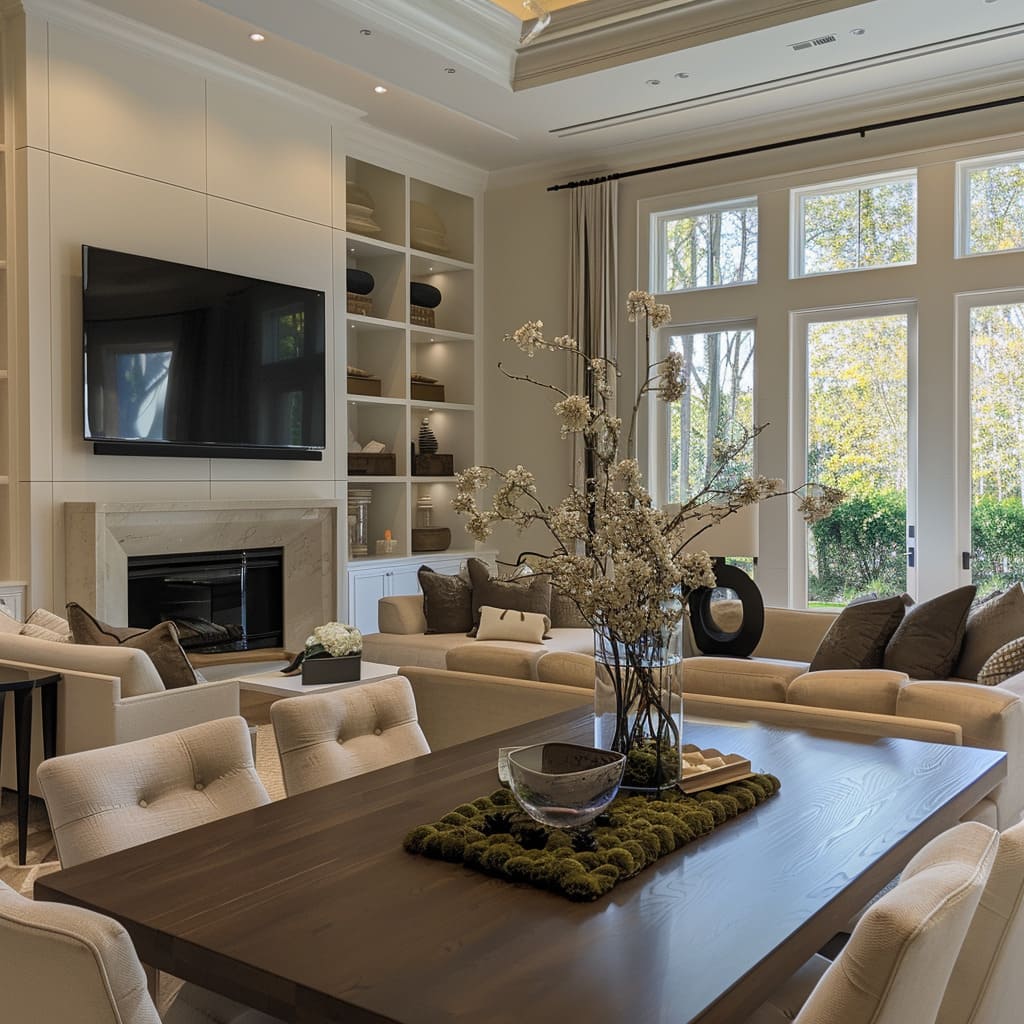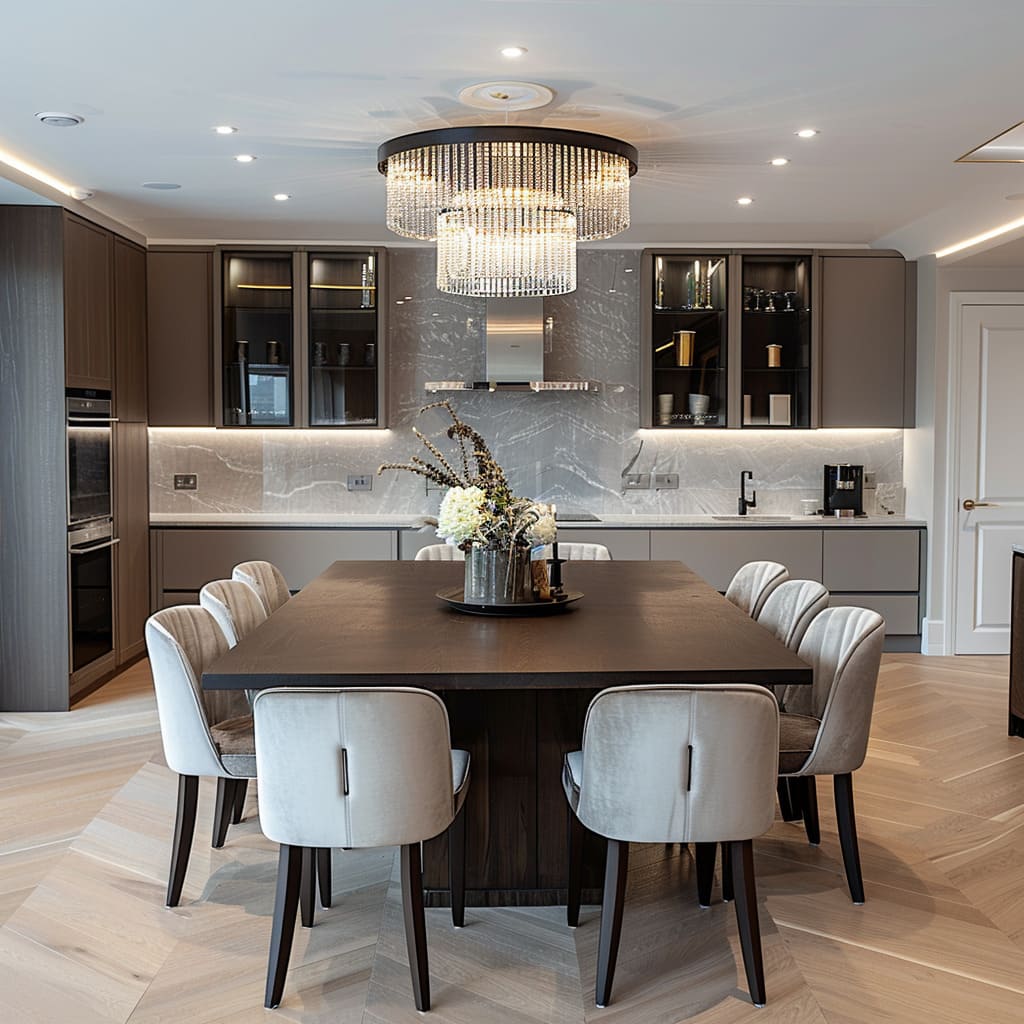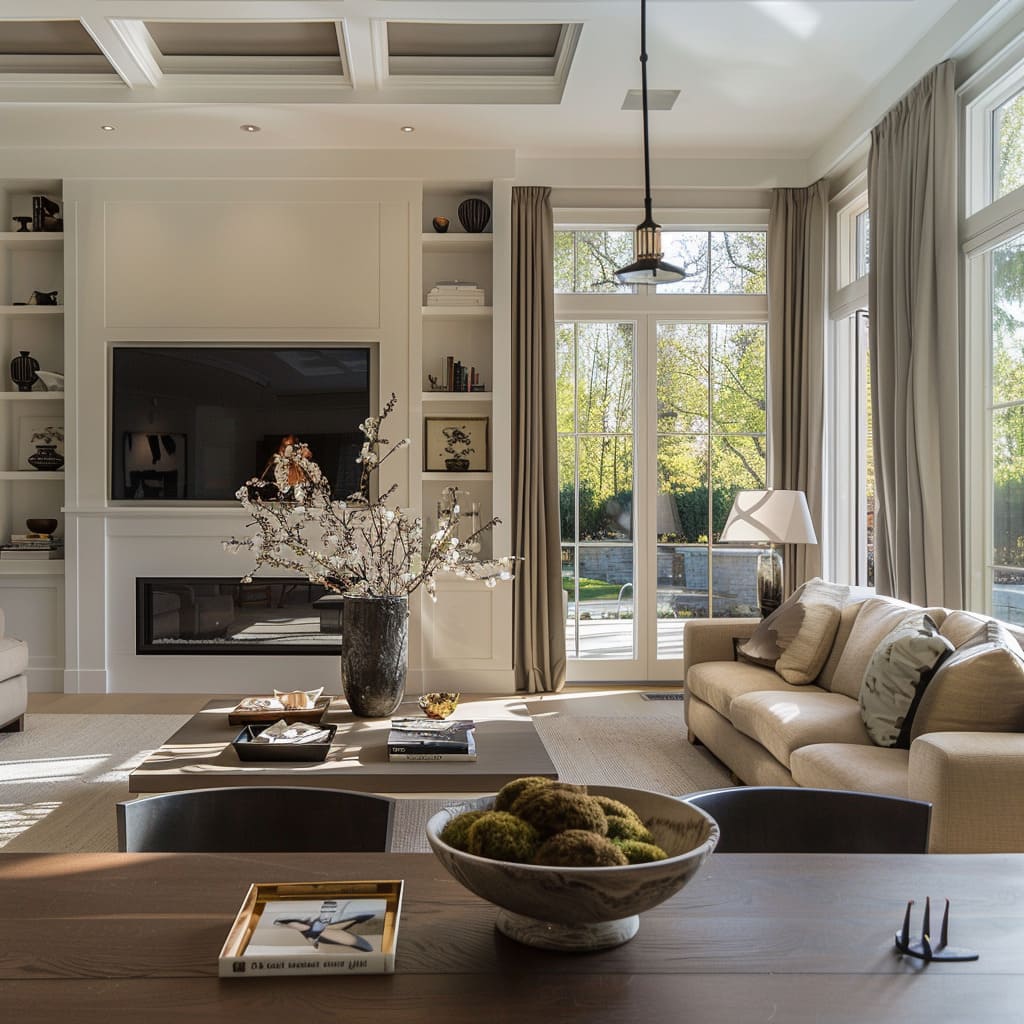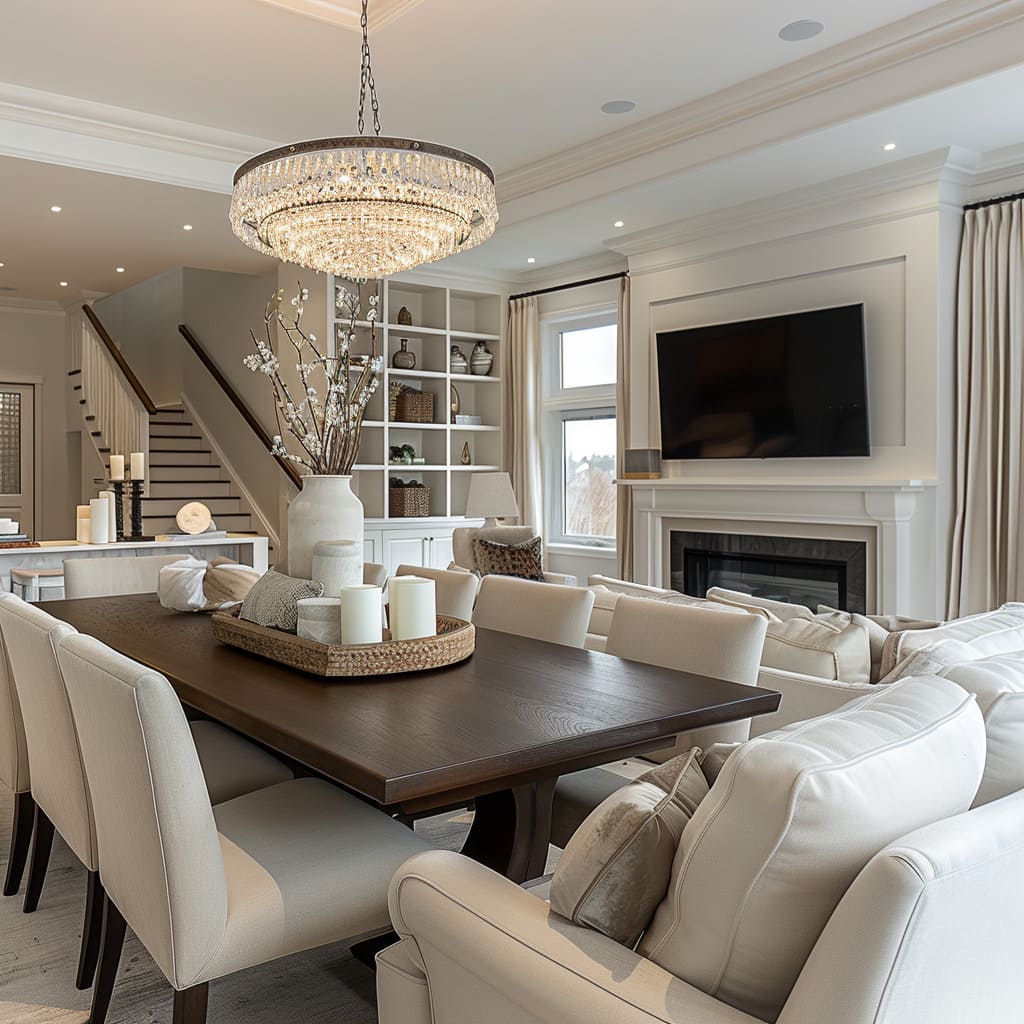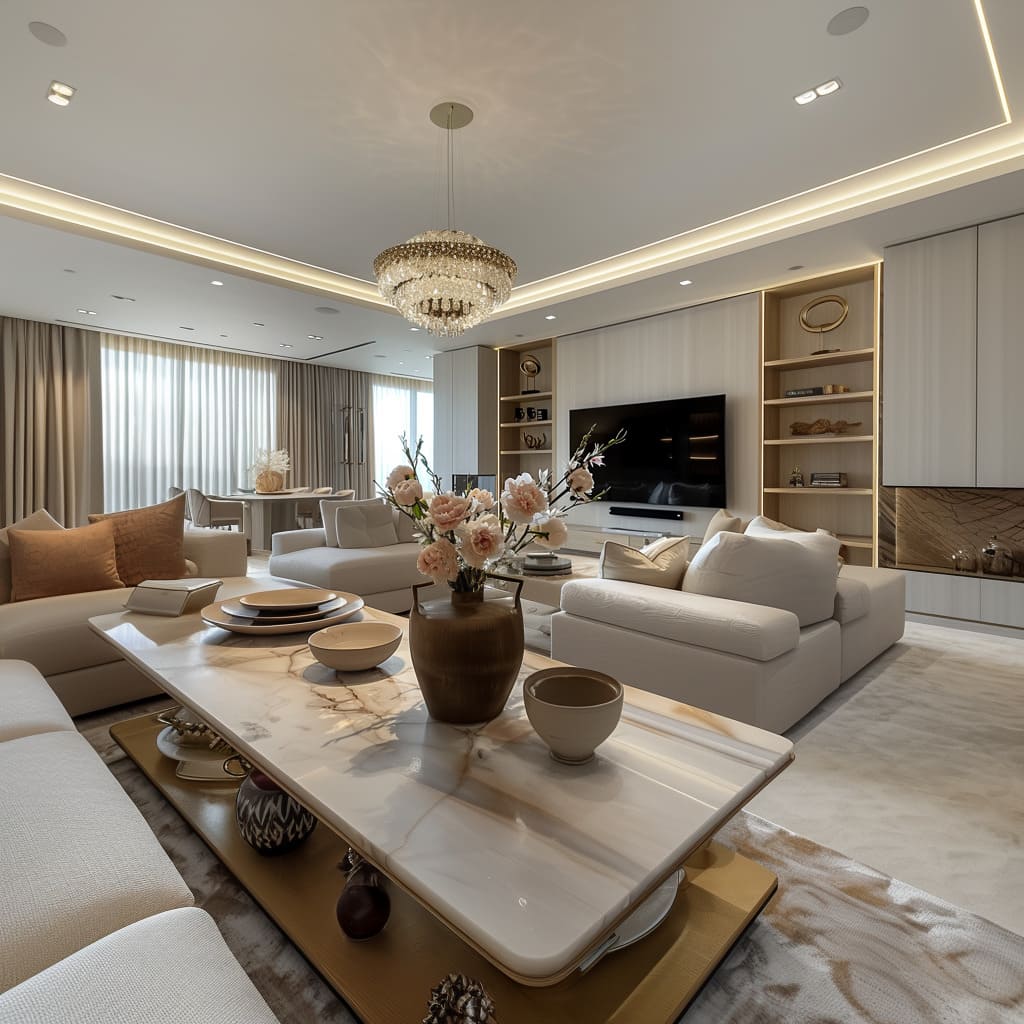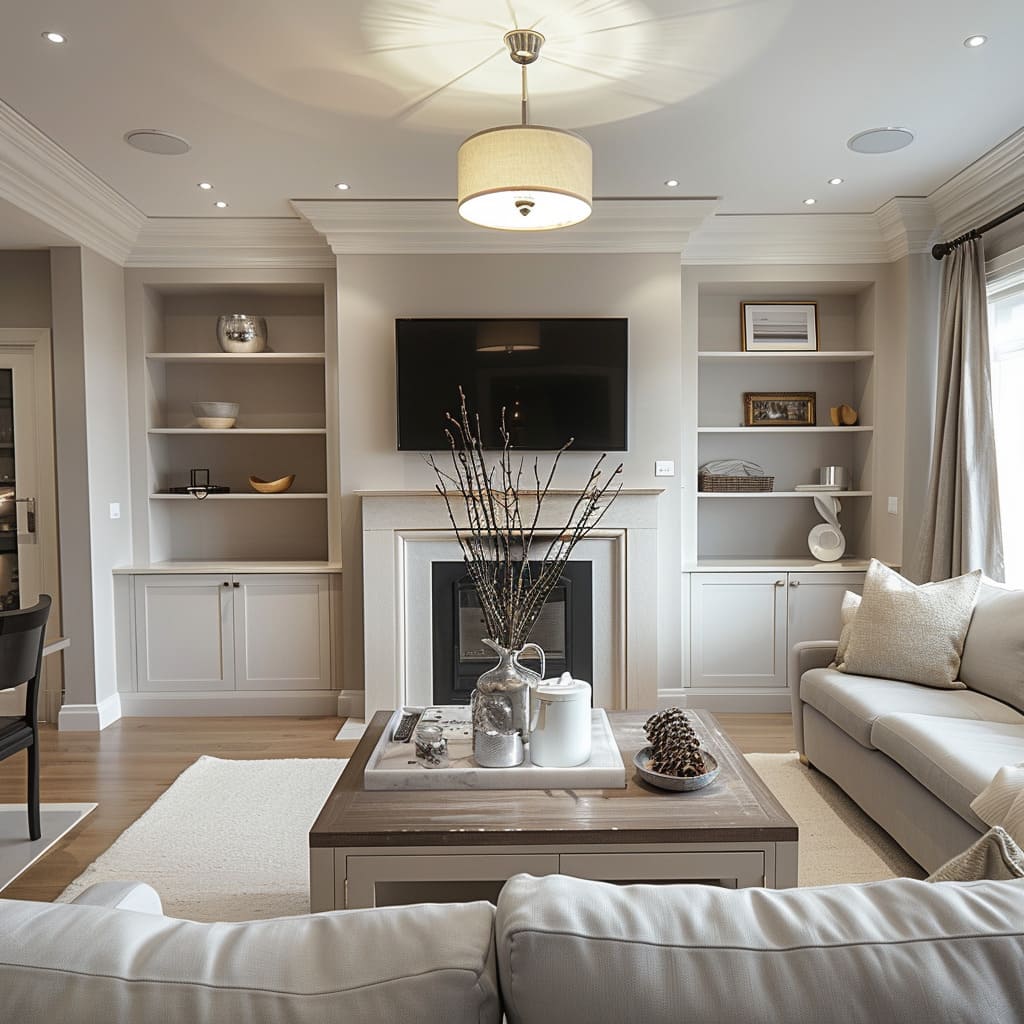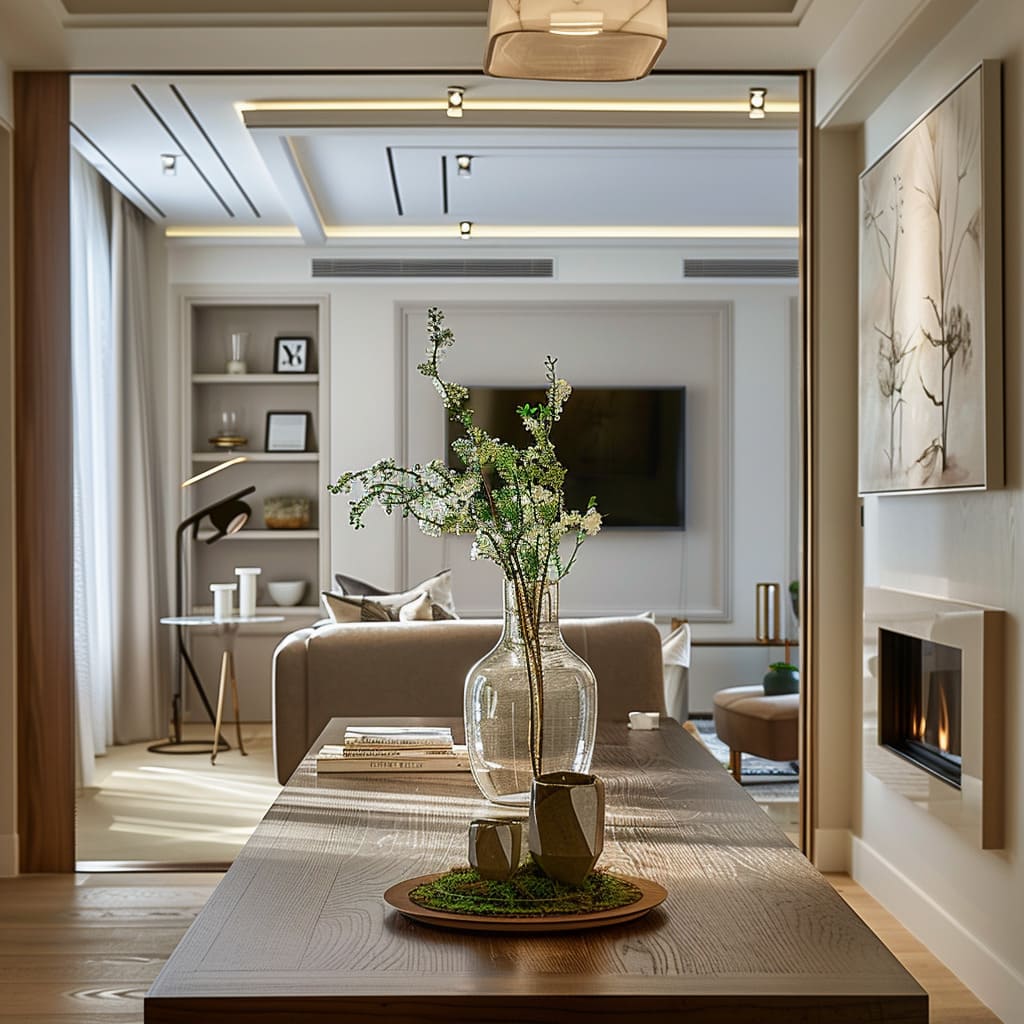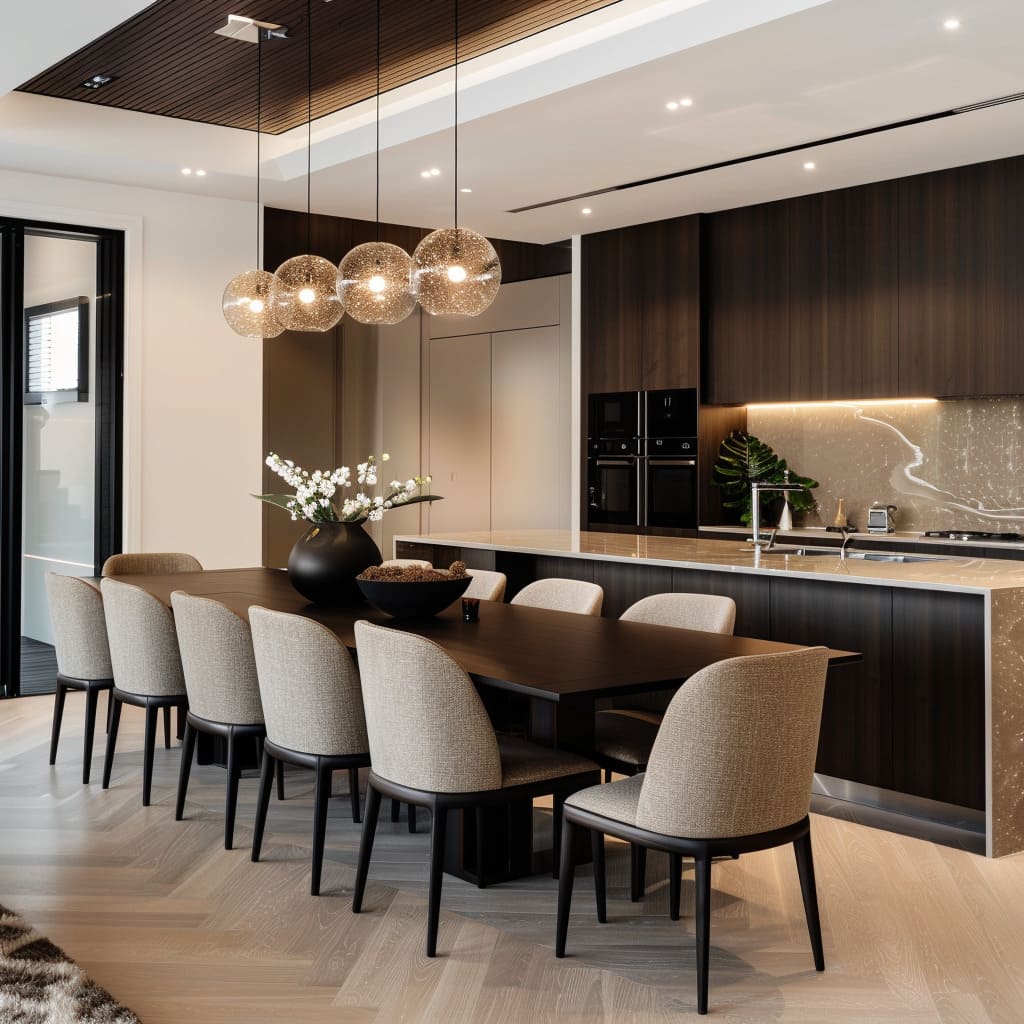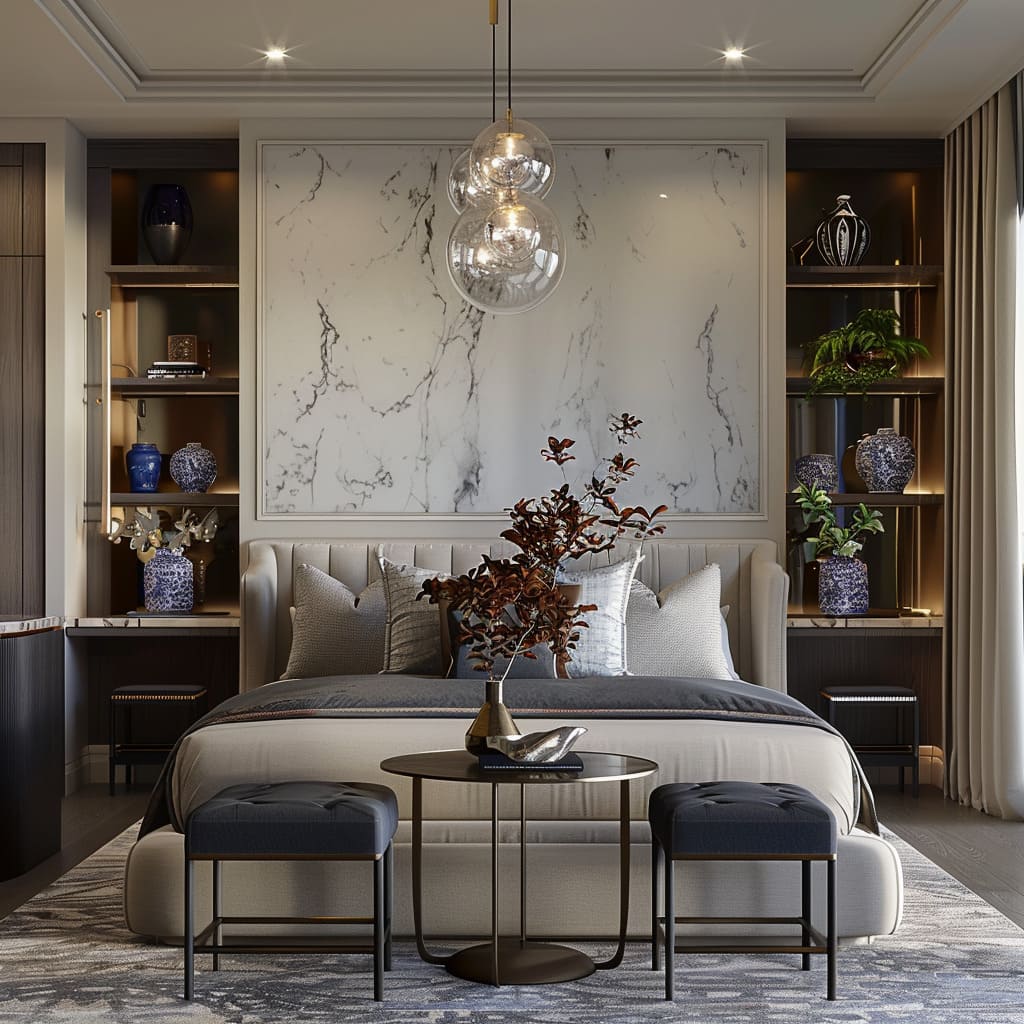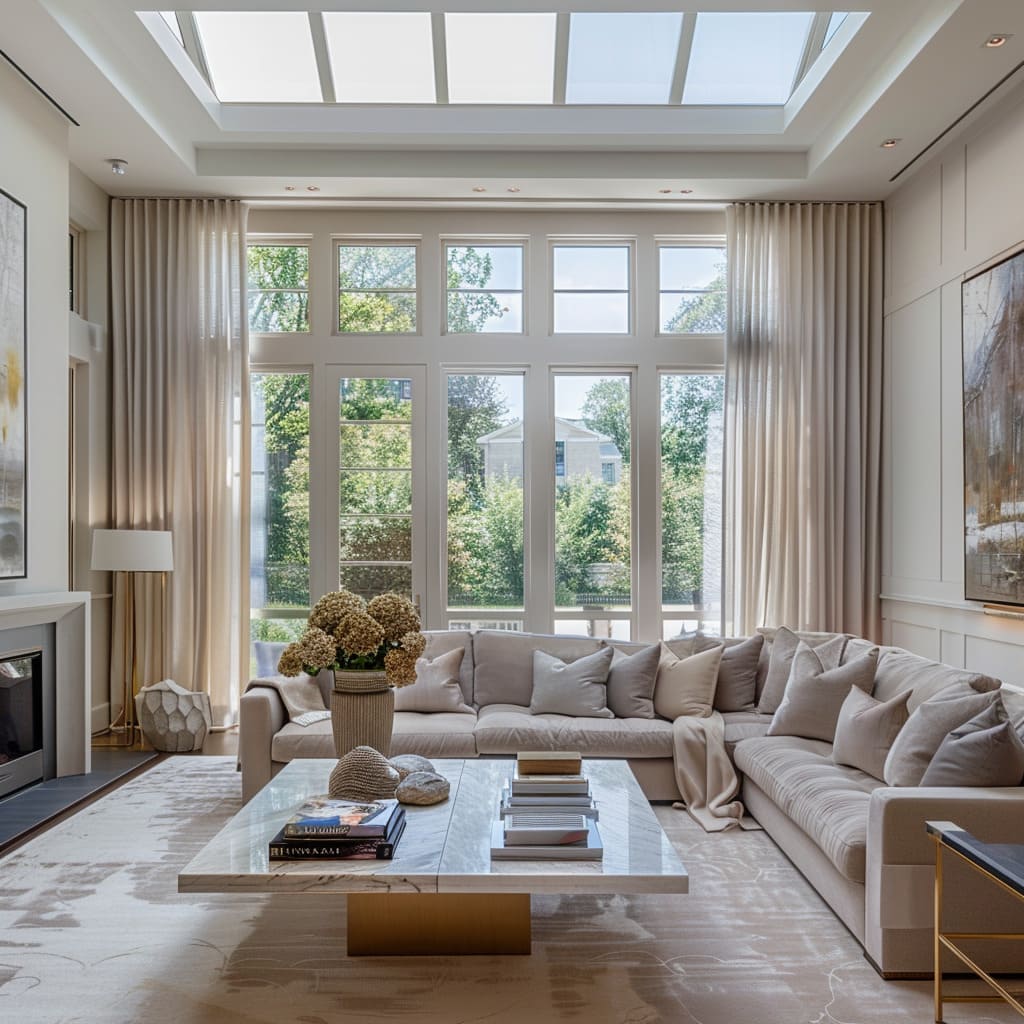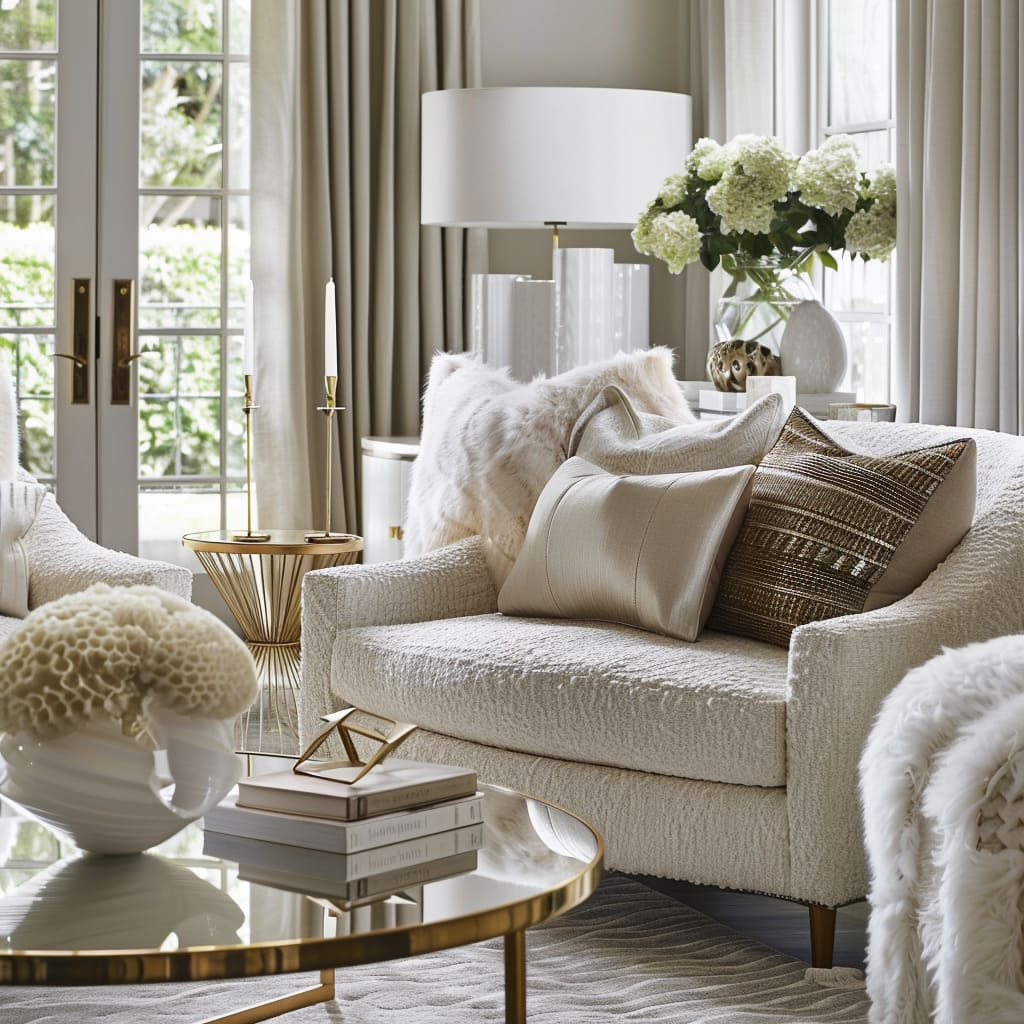Natural light is an essential element in interior design, offering both practical and aesthetic benefits. In living rooms, where people often gather to relax, entertain, and spend time with family, the quality and quantity of light can greatly influence the overall atmosphere.
Maximizing natural light in these spaces not only creates a warm and inviting environment but also enhances the room’s visual appeal, making it feel more open and spacious. This guide will explore a variety of strategies to optimize natural light in your living room, taking into account architectural elements, furniture arrangement, window treatments, color schemes, and more.
The Role of Architectural Elements
Windows are the primary source of natural light in most living rooms, and their size, placement, and style can significantly impact how light enters the space. Large, floor-to-ceiling windows are ideal for allowing maximum sunlight to flood the room, creating a bright and airy feel.
These expansive windows also provide unobstructed views of the outdoors, further enhancing the connection between the interior and exterior spaces. When designing or renovating a living room, consider the orientation of the room and the placement of windows to capture the best possible light throughout the day.
Bay windows are another excellent architectural feature that can enhance natural light. These windows protrude from the main walls of the living room, creating a nook that allows light to enter from multiple angles.
This design not only increases the amount of light in the room but also adds architectural interest. The window seat within a bay window can be turned into a cozy sitting area, where you can enjoy the sunlight while reading a book or simply relaxing.
Skylights offer an additional avenue for introducing natural light, especially in living rooms with limited wall space for windows. Positioned on the ceiling, skylights bring in light from above, which can make a room feel more open and spacious.
They are particularly effective in rooms that might otherwise feel dark or enclosed. Skylights also provide a unique quality of light, with the sun’s movement creating changing patterns and shades throughout the day.
To maximize the effect, consider the size and placement of skylights carefully, ensuring they are positioned where they can draw in the most light without causing glare.
The design of the ceiling can also influence the distribution of natural light in a living room. A well-considered ceiling with recessed lighting can complement natural light, ensuring the room remains bright even when daylight begins to fade.
Recessed lighting is subtle and unobtrusive, providing even illumination that supports the overall light scheme of the room without overshadowing the natural light. Pairing this with strategically placed windows and skylights ensures a balanced and well-lit environment.
How can the orientation and placement of windows affect the amount and quality of natural light in a living room throughout the day?
Orientation: The direction in which windows face relative to the sun’s path has a significant impact on the type of light that enters the room. For example, windows facing east will capture the soft, warm light of the morning sun, creating a bright and inviting space early in the day.
South-facing windows generally receive the most consistent and strong sunlight throughout the day, which can help to keep the room well-lit and warm. West-facing windows will bring in intense light in the afternoon and early evening, often with a warmer tone, which can create a cozy atmosphere but might also result in glare or excessive heat.
North-facing windows tend to provide softer, more diffused light, which is consistent but often less intense, creating a cooler and more evenly lit environment. Placement: The height and position of windows within a room also influence how light is distributed.
Higher windows can allow light to penetrate deeper into the room, especially if there are obstacles outside like trees or buildings that might block lower windows. Windows placed on opposite walls can create cross-lighting, reducing shadows and ensuring a more uniform distribution of light.
Additionally, the placement of windows can affect privacy and views, so balancing these factors with the desired amount of natural light is essential in the design or renovation of a living room.
What are the specific advantages of installing floor-to-ceiling windows in a living room, and how do they contribute to the overall atmosphere of the space?
Floor-to-ceiling windows offer several specific advantages in a living room, significantly contributing to the overall atmosphere and functionality of the space.Maximized Natural Light: Floor-to-ceiling windows allow an abundance of natural light to flood into the room, creating a bright, airy environment. This influx of natural light can make the space feel larger and more open, reducing the need for artificial lighting during the day and creating a warm and inviting atmosphere.
Enhanced Views: These expansive windows provide unobstructed views of the outdoors, whether it’s a garden, a cityscape, or a scenic landscape. The connection to the outside world can make the living room feel more integrated with its surroundings, offering a sense of tranquility and bringing the beauty of nature indoors.
Improved Aesthetic Appeal: Floor-to-ceiling windows add a modern and luxurious element to the room’s design. They serve as a striking architectural feature that can elevate the overall look of the living room, creating a focal point that draws attention and adds visual interest.
Seamless Indoor-Outdoor Flow: These windows can create a seamless transition between indoor and outdoor spaces, especially if they lead to a patio or garden.
This fluid connection enhances the living space, making it feel like an extension of the outdoors and offering more opportunities for indoor-outdoor living.
Increased Property Value: Installing floor-to-ceiling windows can also increase the value of your home, as they are often seen as a desirable feature that adds to the luxury and modernity of the property. By integrating floor-to-ceiling windows into a living room design, you can dramatically enhance the natural light, aesthetics, and overall ambiance of the space, creating a more open, welcoming, and visually appealing environment.
In what ways can skylights and ceiling design be used together to enhance natural light in a living room?
Skylights and ceiling design can be effectively combined to enhance natural light in a living room, particularly in spaces that might otherwise feel enclosed or dark. Here’s how: Bringing in Natural Light from Above: Skylights introduce natural light from above, bypassing any obstacles that might block light from windows, such as neighboring buildings or tall trees.
This vertical source of light brightens the space evenly, reaching areas that wall windows cannot, and is particularly effective in rooms with high ceilings or those located in the center of a home. Creating a Sense of Openness: The installation of skylights can open up a room, making it feel more spacious and less confined.
The additional light from above creates an airy atmosphere that can transform the ambiance of a dark or enclosed living room, making it more inviting and pleasant to spend time in.
Enhancing Ceiling Design for Light Distribution: A well-designed ceiling can further enhance the impact of skylights by helping to distribute light evenly throughout the room. For example, a sloped or vaulted ceiling can help direct sunlight deeper into the living space, while a flat ceiling can diffuse the light for a softer, more even illumination.
Incorporating light-colored or reflective materials in the ceiling design can also help to bounce light around the room, maximizing the effect of the skylights.
Complementing Natural Light with Recessed Lighting: Recessed lighting can be integrated into the ceiling design to complement the natural light from skylights, ensuring the room remains well-lit even after sunset. This combination allows for a consistent lighting scheme that transitions smoothly from day to night, maintaining the room’s bright and open feel.
Adding Architectural Interest: The strategic placement of skylights can enhance the architectural appeal of the ceiling. Whether it’s a single large skylight or a series of smaller ones, these features can be positioned to highlight certain areas of the room, such as seating or dining areas, adding visual interest and drawing attention to the design elements of the space.
By thoughtfully integrating skylights with the ceiling design, you can significantly improve the natural light in a living room, transforming it from a potentially dark and enclosed space into a bright, welcoming environment that feels open and connected to the outdoors
Furniture Placement and Selection
The arrangement of furniture in a living room plays a crucial role in how light is distributed throughout the space. Positioning furniture away from windows allows light to flow freely into the room, reducing shadows and dark corners.
Sofas and chairs placed facing windows or angled towards light sources can create a more inviting and connected feel, making the most of the natural light available. Avoid placing large, bulky furniture directly in front of windows, as this can block light and make the room feel smaller and more closed off.
Choosing furniture with light-reflective materials can further enhance the brightness of a living room. Upholstery in light-colored fabrics, such as soft neutrals or pastels, reflects more light than darker colors, contributing to a lighter and more open feel.
Glossy or metallic finishes on tables and other surfaces can also help to bounce light around the room, amplifying the overall effect. These reflective materials work particularly well in combination with large windows and skylights, capturing and redistributing the natural light.
Mirrors and other reflective surfaces are powerful tools in maximizing natural light. Placing a large mirror opposite a window can effectively double the amount of light in the room, as the mirror reflects the incoming light back into the space.
Mirrors can also create the illusion of additional windows, making the room feel larger and more expansive. When using mirrors, consider their placement carefully to ensure they reflect the most light without causing unwanted glare.
Reflective surfaces such as glass-topped tables, metallic decor, and light-colored wood finishes can also contribute to a brighter, more open atmosphere.
Window Treatments and Their Influence
The choice of window treatments can significantly impact the amount of natural light that enters your living room. Light, airy fabrics for curtains allow sunlight to filter through while still providing some privacy.
Sheer curtains are an excellent option for maximizing light, as they soften the incoming sunlight and spread it evenly throughout the room. When selecting curtains, consider colors that complement the room’s overall color scheme while maintaining a light, bright feel.
For added flexibility, layer sheer curtains with heavier drapes that can be drawn in the evening or on particularly sunny days to control the amount of light and heat entering the room.
Blinds and shades offer more control over natural light, allowing you to adjust the amount of sunlight entering the room at different times of the day. Consider options like Roman shades or roller blinds that can be easily raised or lowered to suit your lighting needs.
These treatments can be found in a range of materials, from natural fibers like linen to more contemporary fabrics with UV protection. When choosing blinds or shades, think about how they will impact the room’s light levels as well as their aesthetic contribution to the overall design.
How can the use of light, airy fabrics in curtains enhance the natural light in your living room while still providing necessary privacy?
The use of light, airy fabrics in curtains can enhance the natural light in your living room while still maintaining privacy through several key mechanisms: Maximizing Light Transmission: Light, airy fabrics such as sheer linen or voile allow sunlight to pass through them, diffusing the light and creating a soft, even glow throughout the room. These fabrics filter sunlight rather than block it, which means they can brighten a space without causing glare or harsh shadows.
This helps to maintain a well-lit and inviting atmosphere in the living room, making it feel more open and spacious.
Maintaining Privacy: Despite their lightness, these fabrics are woven in a way that allows them to offer a degree of privacy. Sheer curtains obscure direct lines of sight into the room from outside, especially during the daytime when the exterior is brighter than the interior.
This ensures that you can enjoy the natural light without feeling exposed, creating a comfortable and secure environment within your home. Enhancing Room Aesthetics: Light, airy fabrics also contribute to the overall aesthetic of the living room.
Their soft texture and gentle drape add a sense of elegance and lightness to the space, complementing the natural light and making the room feel more serene and harmonious. When paired with the right color palette, these curtains can blend seamlessly into the room’s design, enhancing its visual appeal without overpowering it.
By choosing light, airy fabrics for your curtains, you can achieve a balance between maximizing natural light and maintaining the privacy of your living room, all while adding a touch of style to your home’s interior design.
What are the benefits of layering sheer curtains with heavier drapes, and how does this approach offer flexibility in controlling natural light and heat throughout the day?
Layering sheer curtains with heavier drapes offers several benefits and provides a versatile approach to controlling natural light and heat throughout the day: Enhanced Light Control: By layering sheer curtains with heavier drapes, you gain the ability to adjust the amount of natural light entering the room.
During the day, the sheer curtains allow soft, diffused light to filter into the space, creating a bright and airy atmosphere while maintaining privacy.
When more light control is needed, such as during very sunny periods or for watching television, the heavier drapes can be drawn to reduce the intensity of the light or block it out completely. This flexibility allows you to tailor the room’s lighting to your specific needs at different times of the day.
Improved Thermal Regulation: Heavier drapes can also play a crucial role in controlling the temperature within the living room. In cooler months, the drapes can be closed to add an extra layer of insulation, helping to keep the warmth inside and reduce energy costs.
Conversely, during hot weather, the drapes can be drawn to block out direct sunlight, preventing the room from overheating and reducing the need for air conditioning. This dual-layer approach allows you to manage both natural light and heat effectively, contributing to a more comfortable living environment.
Increased Privacy Options: Layering also enhances privacy control. Sheer curtains provide daytime privacy while still allowing you to enjoy natural light, as they obscure direct views into the room.
In the evening, when interior lights are on and privacy is a greater concern, the heavier drapes can be drawn to fully block views from outside. This layered solution offers a dynamic way to maintain privacy without sacrificing the benefits of natural light.
Aesthetic Versatility: Beyond functionality, layering sheer curtains with heavier drapes also adds to the visual appeal of your living room. The combination of textures and fabrics creates a rich, layered look that can enhance the room’s design.
The sheer curtains add softness and elegance, while the heavier drapes can introduce color, pattern, or a sense of luxury. This approach allows you to change the room’s mood and style by simply adjusting the drapery, offering a versatile and aesthetically pleasing window treatment solution.
By layering sheer curtains with heavier drapes, you achieve a balanced and adaptable way to manage light, heat, and privacy, while also enhancing the room’s overall decor. This flexibility ensures that your living room remains comfortable and inviting throughout the day, regardless of the changing light and weather conditions.
What factors should you consider when choosing blinds or shades to ensure they effectively manage natural light while complementing the room’s design and overall aesthetic?
When choosing blinds or shades for your living room, several factors are crucial to ensuring they effectively manage natural light while also complementing the room’s design and overall aesthetic: Light Control Needs:
Consider how much control you need over natural light. If you want to diffuse light softly while maintaining privacy, consider light-filtering shades or blinds made from materials like linen or woven fabrics.
For more precise control, such as blocking out light completely for movie viewing or sleeping, opt for blackout shades or blinds with adjustable slats that allow you to control the amount of light entering the room.
Room Orientation and Sun Exposure: The direction your living room faces and the amount of sunlight it receives should influence your choice. Rooms with strong, direct sunlight might benefit from UV-protective shades that help reduce glare and protect furniture and flooring from fading.
In contrast, for rooms with less sunlight, lighter-colored or translucent materials can help maximize available natural light. Material and Durability: The material of the blinds or shades affects both functionality and appearance.
For a modern, sleek look, consider materials like aluminum or faux wood, which are also durable and easy to clean. Natural materials like bamboo or woven grasses can add warmth and texture to the room while providing effective light control.
Ensure the material chosen aligns with the room’s purpose and the level of maintenance you’re comfortable with
Color and Style Coordination: To ensure the blinds or shades complement the room’s design, pay attention to color and style. Neutral colors like whites, greys, or beiges are versatile and can blend seamlessly with various color schemes, while bold colors or patterns can make a statement and add visual interest.
Consider the overall style of your living room—whether it’s modern, traditional, or eclectic—and choose blinds or shades that enhance this aesthetic.
Privacy and Functionality: Privacy is a key consideration, especially in living rooms that face streets or neighboring houses. For high-traffic areas, consider blinds or shades with adjustable slats or top-down, bottom-up functionality that allows you to control the level of privacy while still letting in natural light.
This feature is particularly useful in urban settings where privacy and light control are both essential. Ease of Use and Maintenance: Consider how easy the blinds or shades are to operate and maintain.
Cordless or motorized options offer convenience and a cleaner look, particularly in homes with children or pets. Additionally, think about how often you’ll need to clean the blinds or shades and choose materials that are easy to maintain and resistant to dust or stains.
Budget Considerations: Finally, align your choice with your budget. There is a wide range of options available at different price points, from affordable ready-made blinds to custom shades that fit perfectly within your window frames.
Ensure that your choice balances quality, aesthetics, and functionality within your budget.
By considering these factors, you can choose blinds or shades that not only effectively manage natural light but also enhance the overall design and atmosphere of your living room, making it a comfortable and visually appealing space.
Color Palette and Room Design
The color palette of a living room plays a significant role in how light is perceived within the space.
Neutral tones, such as whites, beiges, and soft greys, are particularly effective at reflecting light, making the room appear brighter and more spacious. Walls painted in light colors can bounce light around the room, enhancing the natural illumination and creating a welcoming environment.
When selecting paint colors, consider how the hues will interact with the room’s natural light throughout the day, as some shades may appear warmer or cooler depending on the time of day and the direction of the light.
Incorporating accent colors in a subtle way can add depth and interest to the room without compromising the light-enhancing effect of a neutral palette. Consider using accent colors in pillows, rugs, or artwork that add a touch of personality while still maintaining the room’s overall brightness.
Avoid using dark or overly saturated colors on large surfaces, as these can absorb light and make the room feel smaller and more enclosed. Instead, opt for soft, muted tones that enhance the room’s natural light and contribute to a cohesive design.
The choice of flooring can also influence the overall brightness of a living room. Light-colored flooring materials, such as pale wood, light-toned tile, or neutral carpeting, can help to reflect light and create a more open feel.
These materials work particularly well in combination with large windows and a neutral color palette, ensuring that the room remains bright and welcoming. Area rugs in soft, light colors can also contribute to the overall lightness of the space while adding warmth and texture underfoot.
Decorative Elements that Enhance Natural Light
Decorative elements can be used to enhance the natural light in a living room, creating a space that feels both stylish and welcoming. Artwork and wall decor should be chosen with care, as the colors and placement can impact the room’s light levels.
Opt for artwork with light, airy themes or reflective frames that contribute to the room’s overall brightness. Avoid placing dark or heavy pieces on walls that receive direct sunlight, as these can absorb light and create unwanted shadows.
Instead, position lighter pieces where they can catch and reflect light, adding to the room’s overall luminosity.
Accessories such as vases, glassware, and other decorative objects can also play a role in maximizing natural light. Glass or metallic vases filled with fresh flowers or branches can catch the light and create interesting reflections, adding a touch of sparkle to the room.
Small decorative mirrors, glass-topped tables, and other reflective surfaces can further enhance the light, creating a bright and inviting atmosphere. When arranging decorative elements, consider their placement in relation to the room’s natural light sources, ensuring they contribute to the overall effect rather than detracting from it
Enhancing Natural Light in Open-Plan Living Spaces
Open-plan living spaces offer unique opportunities for maximizing natural light, as the lack of walls allows light to flow freely throughout the space. In such layouts, it is essential to consider how light will travel from one area to another, ensuring that the entire space benefits from the available natural light.
Furniture placement is crucial in open-plan designs, as it can either facilitate or hinder the flow of light. Arrange furniture in a way that allows light to pass through easily, avoiding large, bulky pieces that block light and create shadows.
Integrating the kitchen and dining areas with the living room can further enhance the natural light in an open-plan space. Choose reflective surfaces for countertops and cabinets, such as glossy finishes or light-colored materials, to help bounce light around the room.
Consider using glass or metal accents in these areas to add to the overall brightness. The use of consistent materials and colors throughout the open-plan space can create a cohesive design that maximizes the light and ensures the different areas feel connected and harmonious
Creating a Balanced Lighting Scheme
While natural light is a valuable resource, it is important to supplement it with well-placed artificial lighting to ensure the living room remains well-lit at all times. A layered lighting scheme that combines natural and artificial light can create a balanced and inviting environment.
Start with ambient lighting, such as recessed lights or ceiling fixtures, to provide overall illumination. Then, add task lighting, such as floor lamps or table lamps, to provide focused light where needed.
Finally, incorporate accent lighting to highlight specific features or areas of the room, such as artwork or architectural details.
Adjusting the lighting scheme throughout the day can help maintain the room’s ambiance, complementing the natural light and ensuring the space feels comfortable and welcoming at all times. Dimmers and adjustable light fixtures offer flexibility, allowing you to control the light levels according to the time of day or the activity.
This combination of natural and artificial light ensures that the room remains bright and functional, regardless of the weather or time of year.
Case Studies and Examples
To illustrate the principles discussed in this guide, we can look at specific examples of living rooms that successfully maximize natural light. In one case, a living room with large floor-to-ceiling windows uses a neutral color palette, light-colored furniture, and carefully placed mirrors to enhance the natural light.
The windows are dressed with sheer curtains that allow light to filter through while maintaining privacy, and the seating is arranged to take full advantage of the sunlight. Decorative elements, such as glass vases and light-toned artwork, add to the overall brightness of the room.
In another example, a living room with a skylight and bay windows uses reflective surfaces and a minimalist approach to furniture and decor to create a bright, airy space. The skylight floods the room with natural light from above, while the bay windows bring in light from different angles.
The furniture is arranged to avoid blocking the light, and the room is decorated with soft, neutral colors that reflect the light and enhance the sense of openness.
Conclusion
Maximizing natural light in your living room is an effective way to create a bright, welcoming, and visually appealing space. By considering architectural elements, furniture placement, window treatments, color schemes, and decorative details, you can enhance the natural light in your living room and make the most of this valuable resource.
Whether you are designing a new living room or looking to update an existing space, the strategies outlined in this guide will help you create a room that feels open, inviting, and full of light.
